
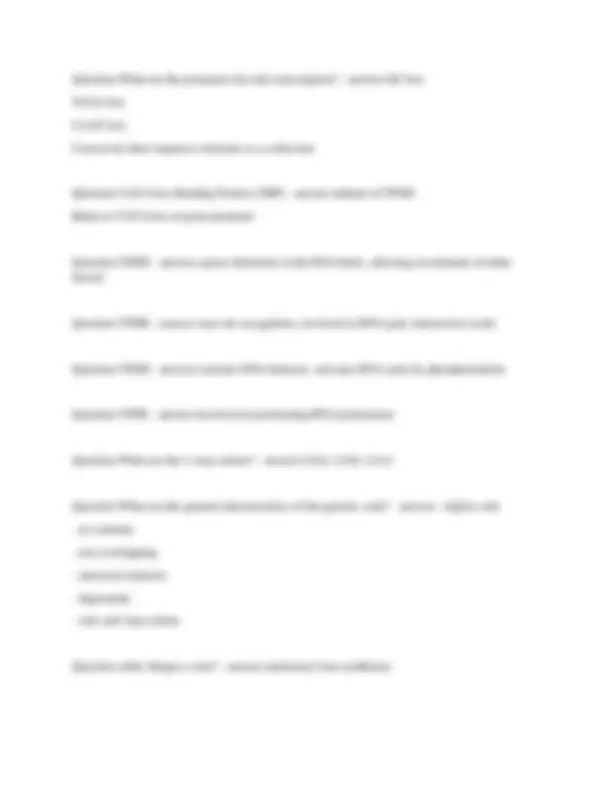
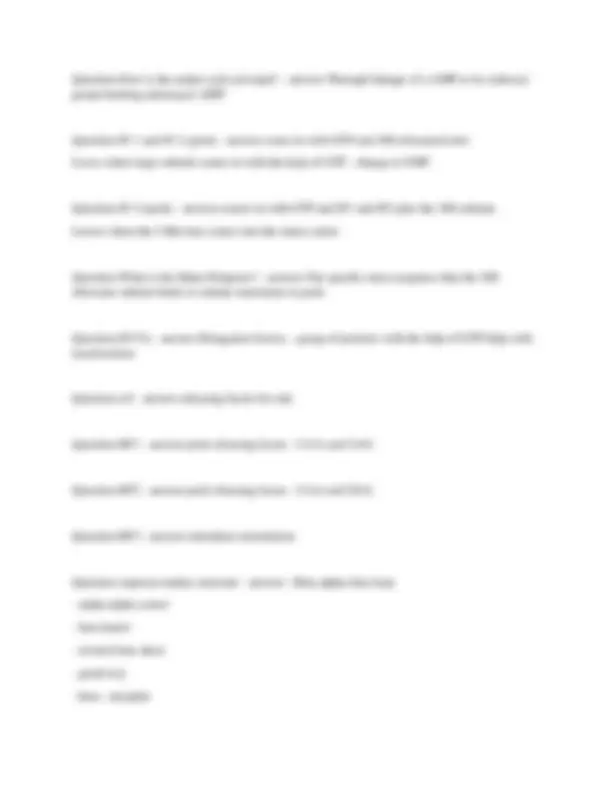
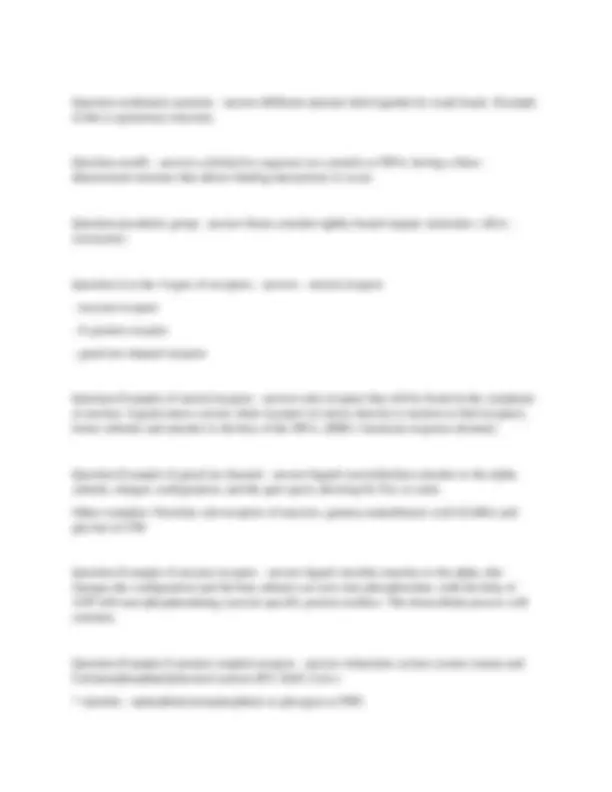
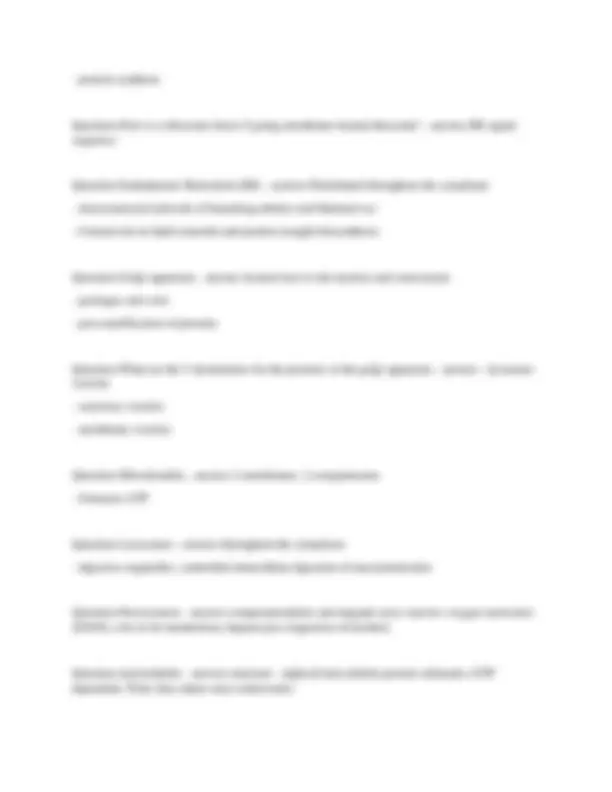
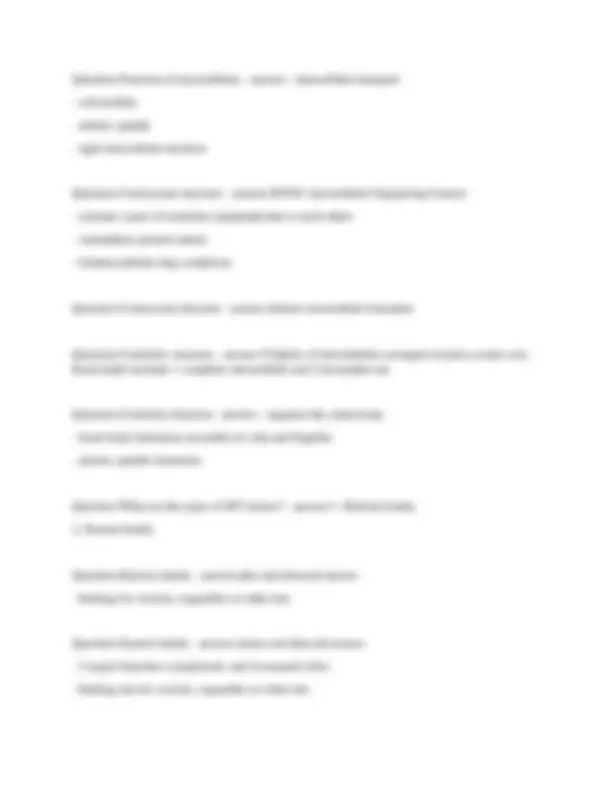
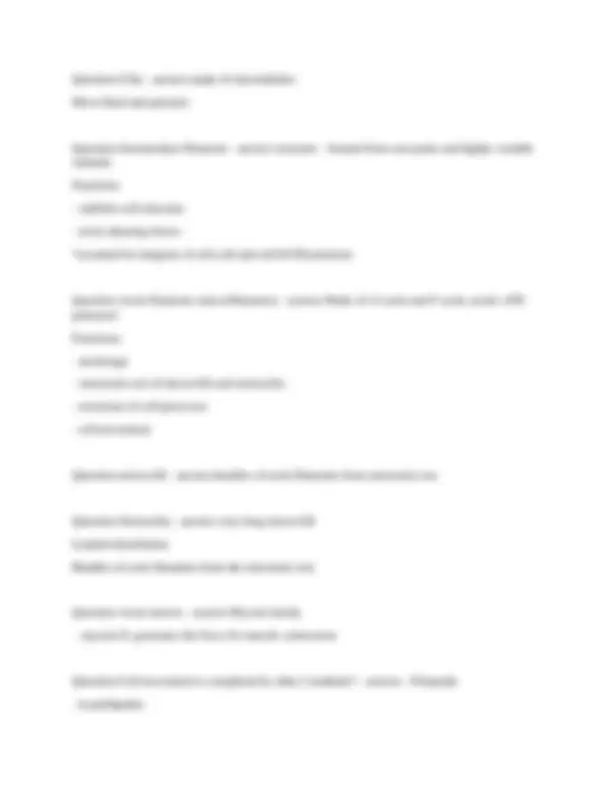
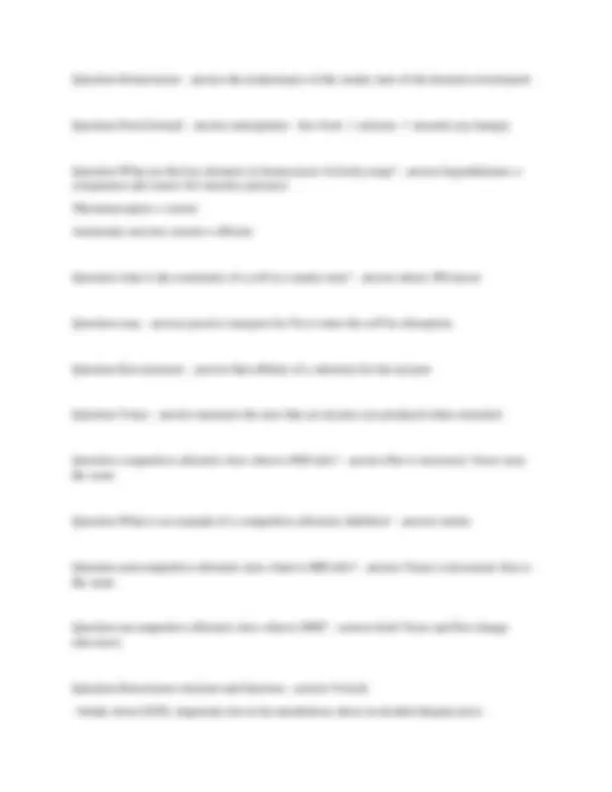
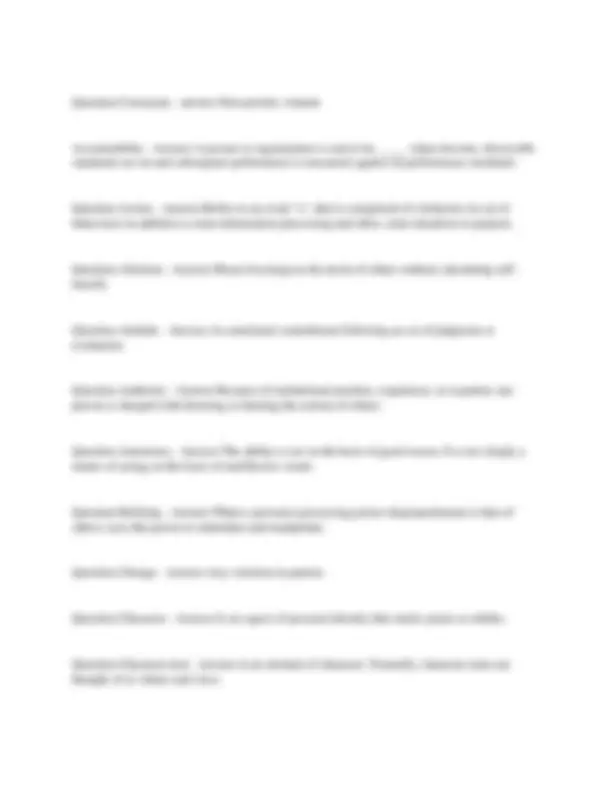
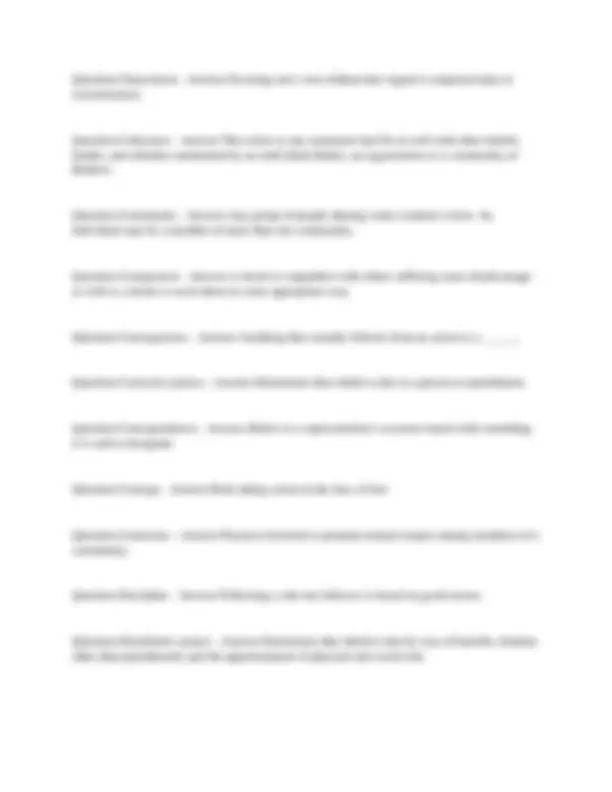
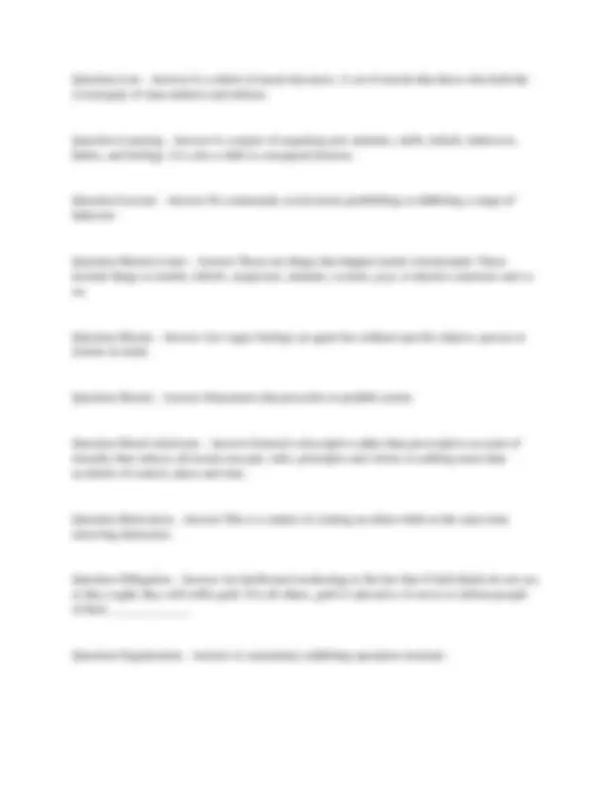
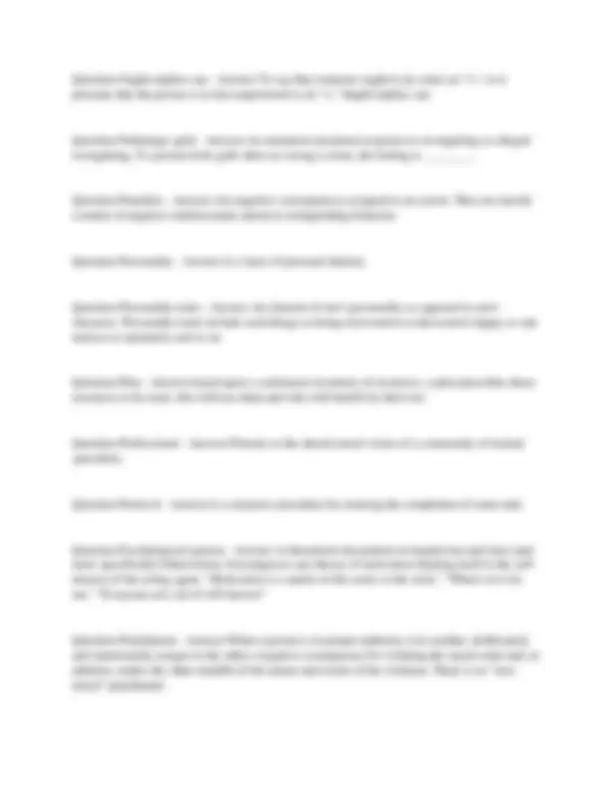
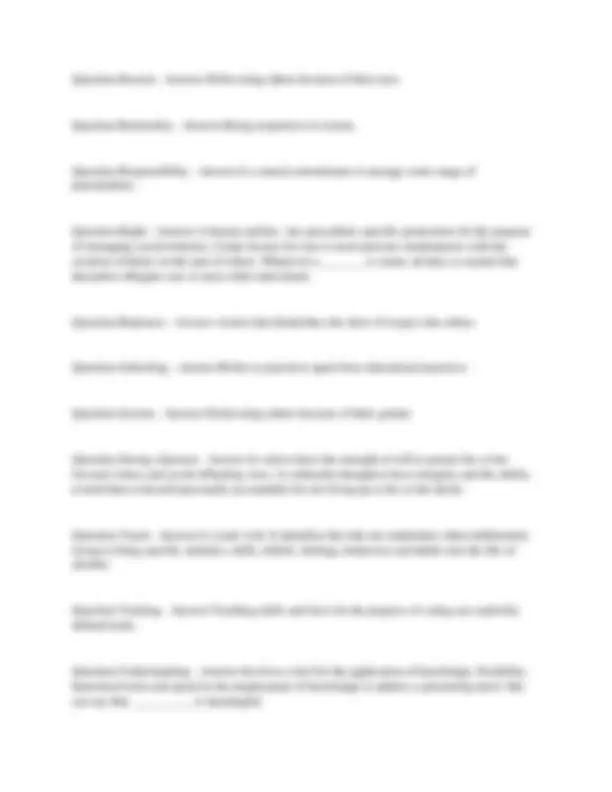
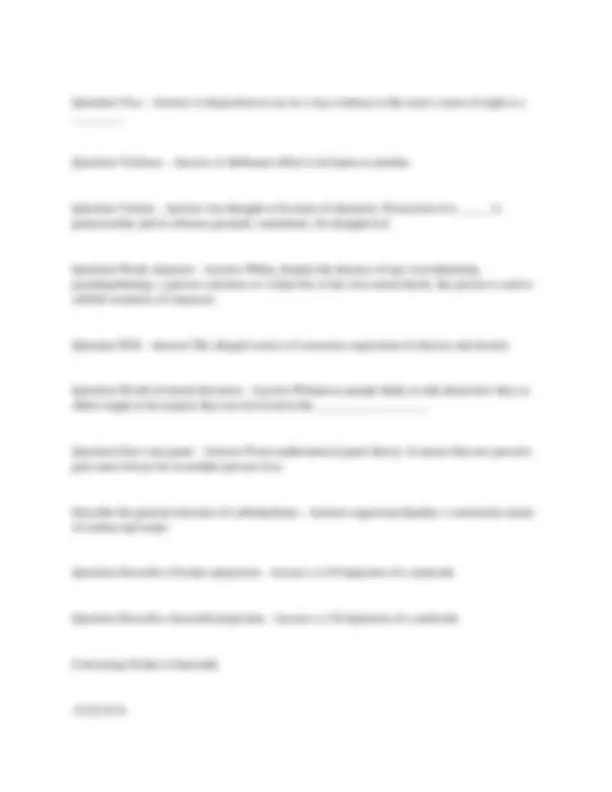
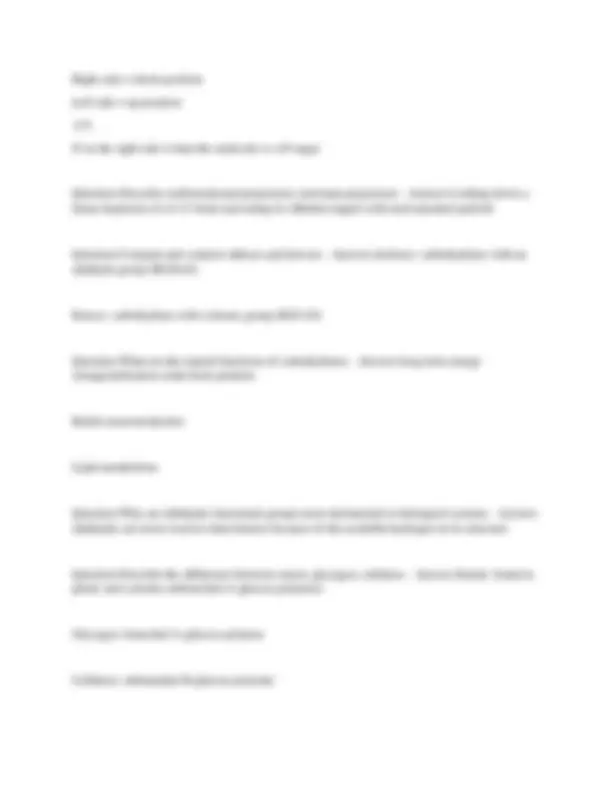
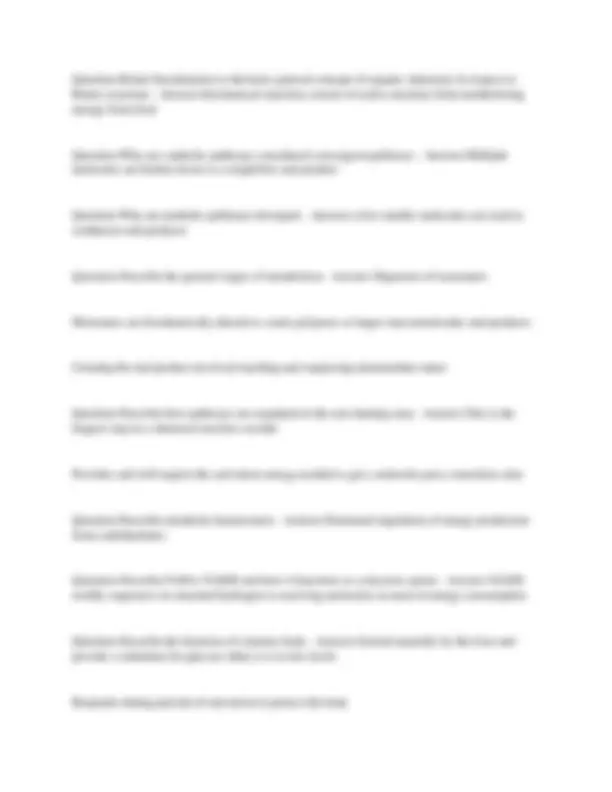
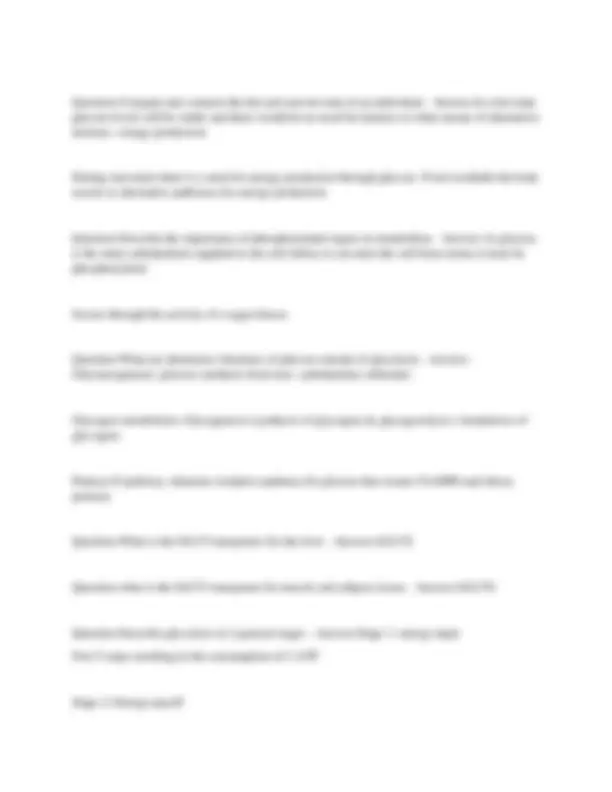
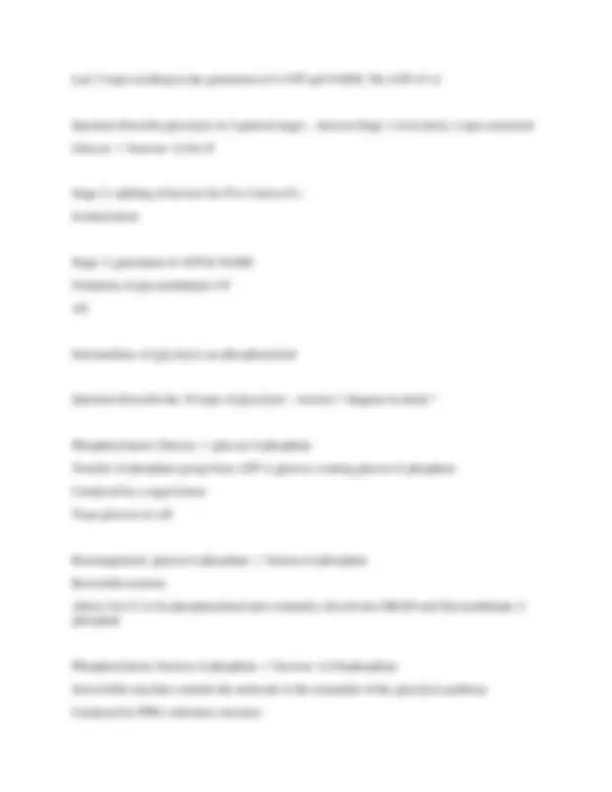
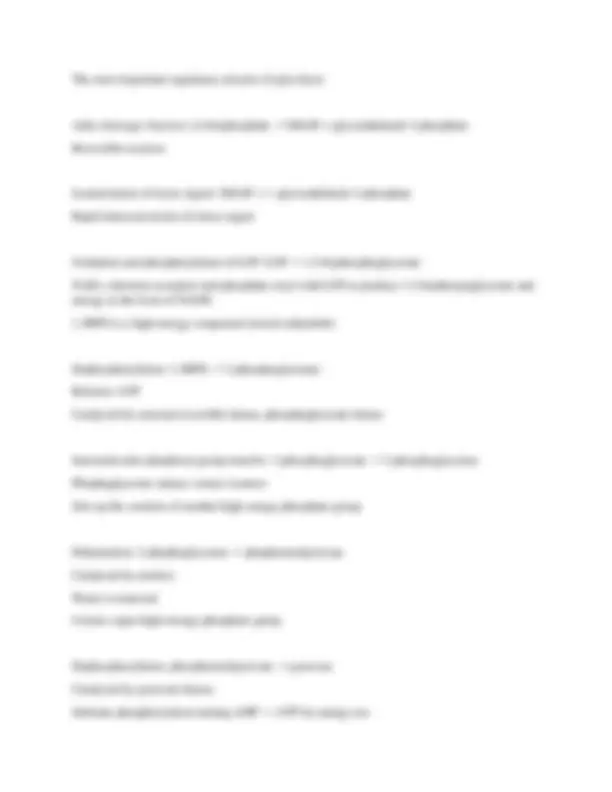
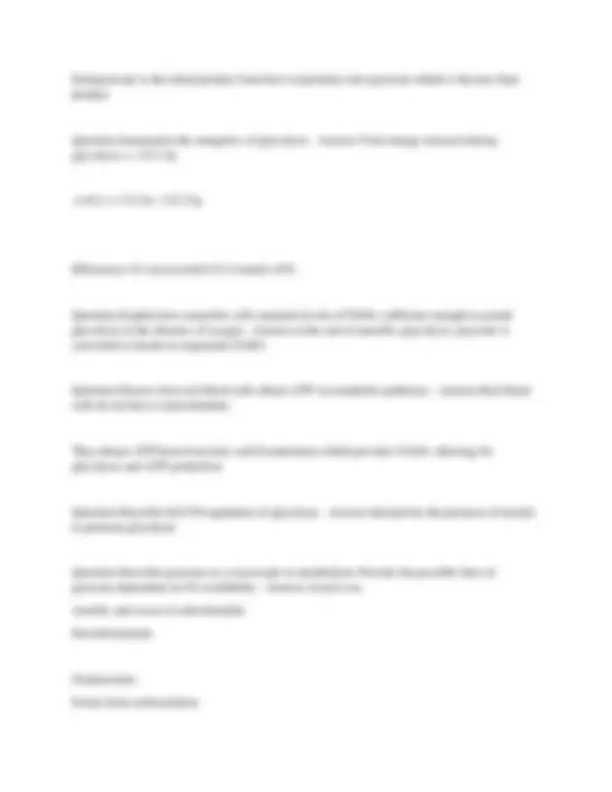
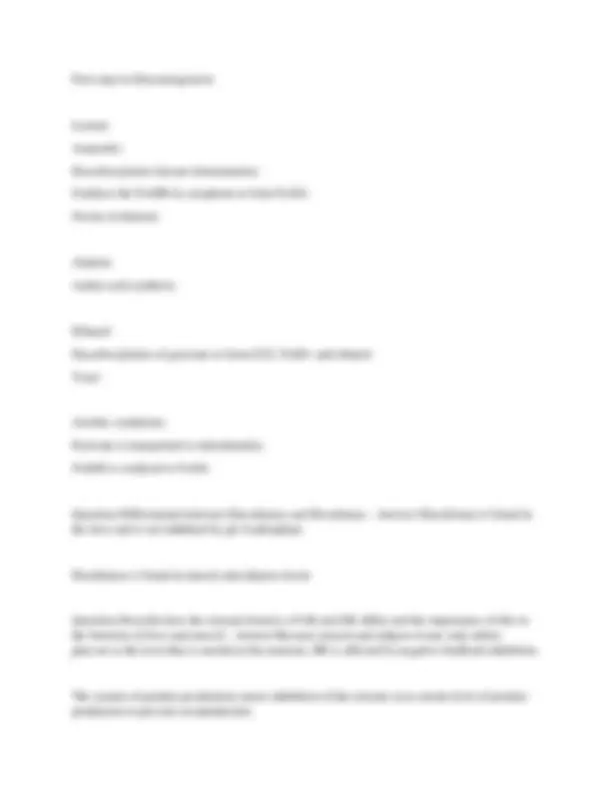
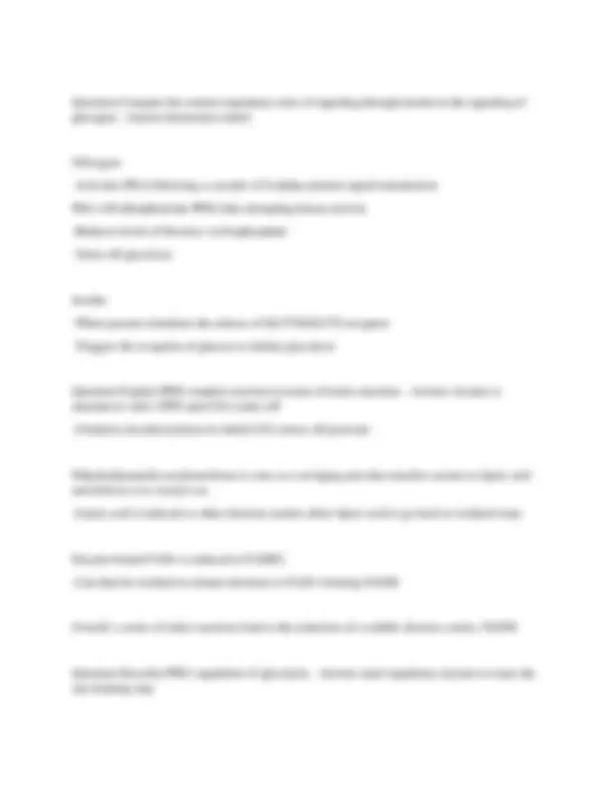
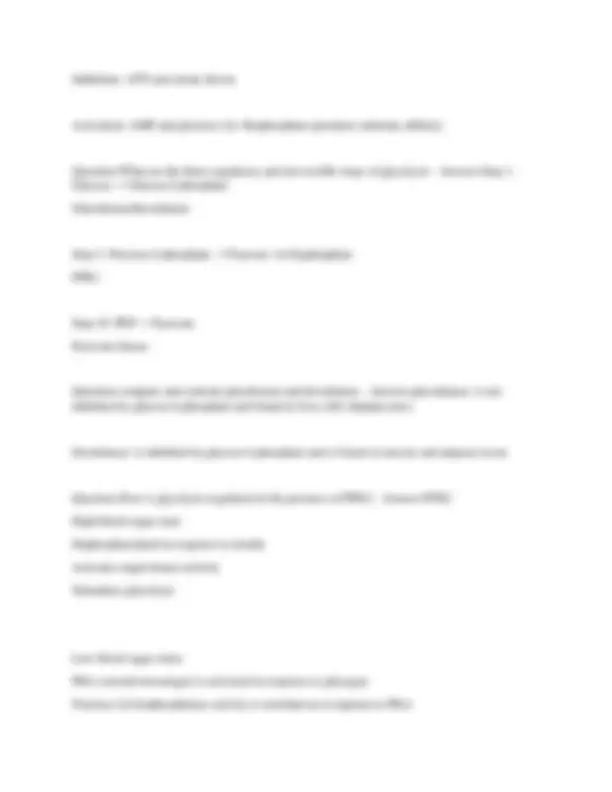
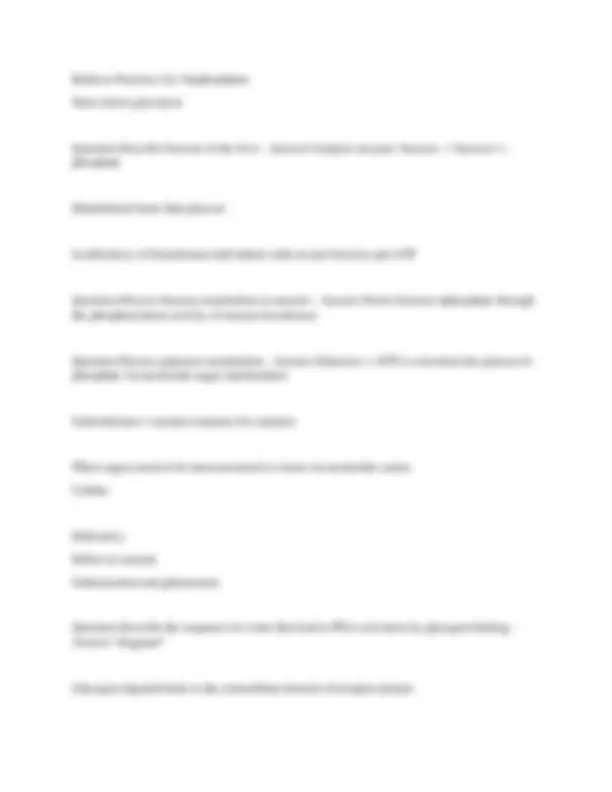
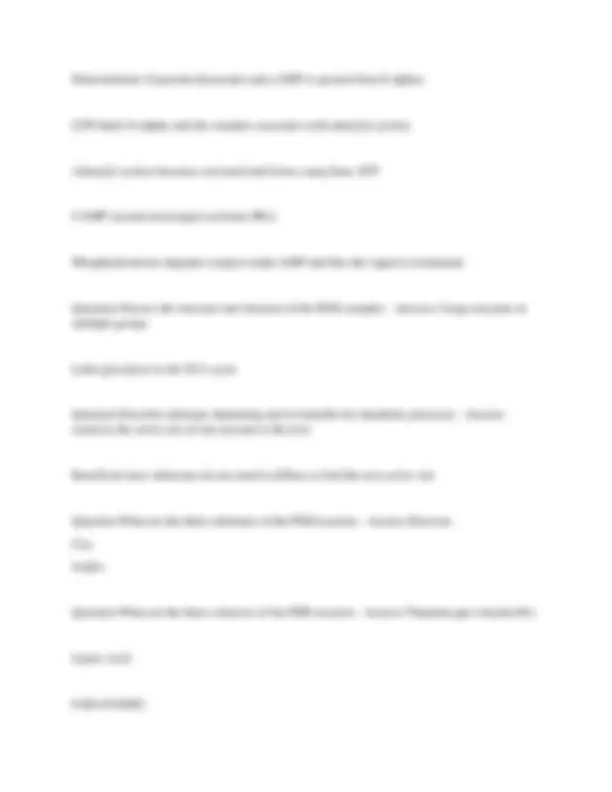
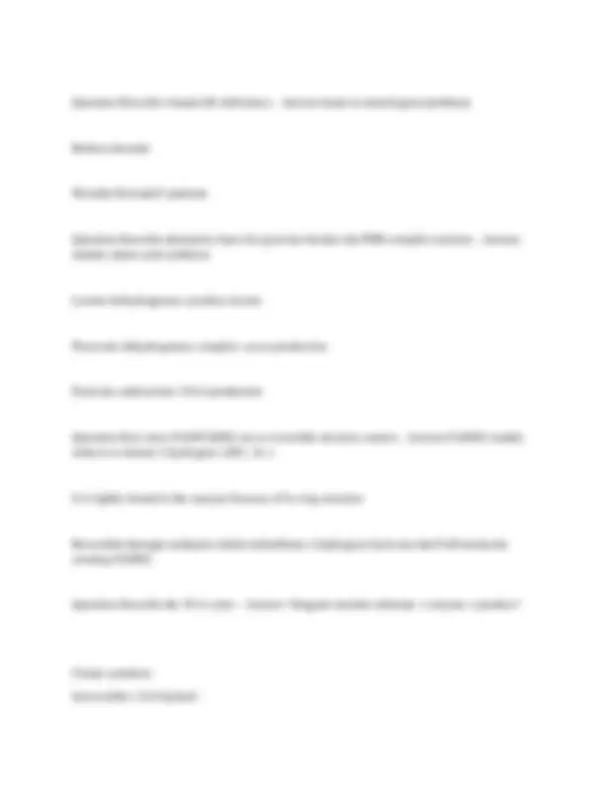
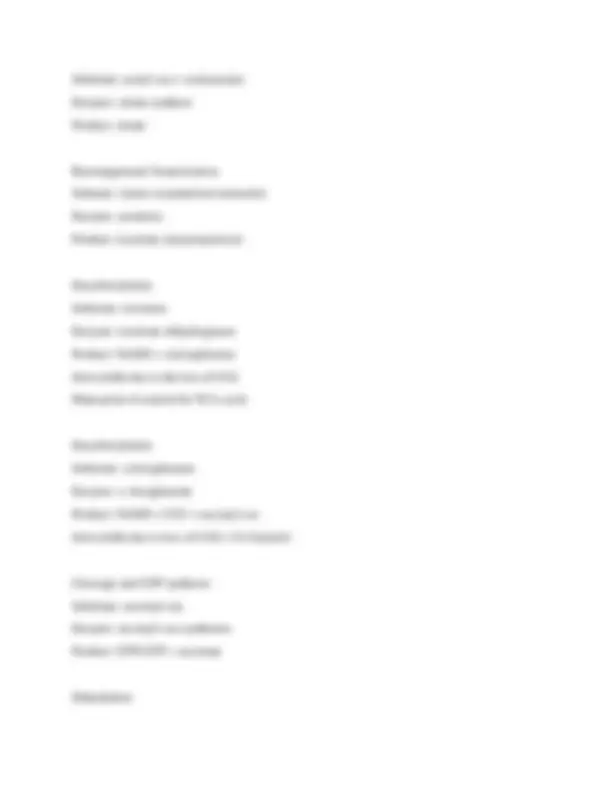
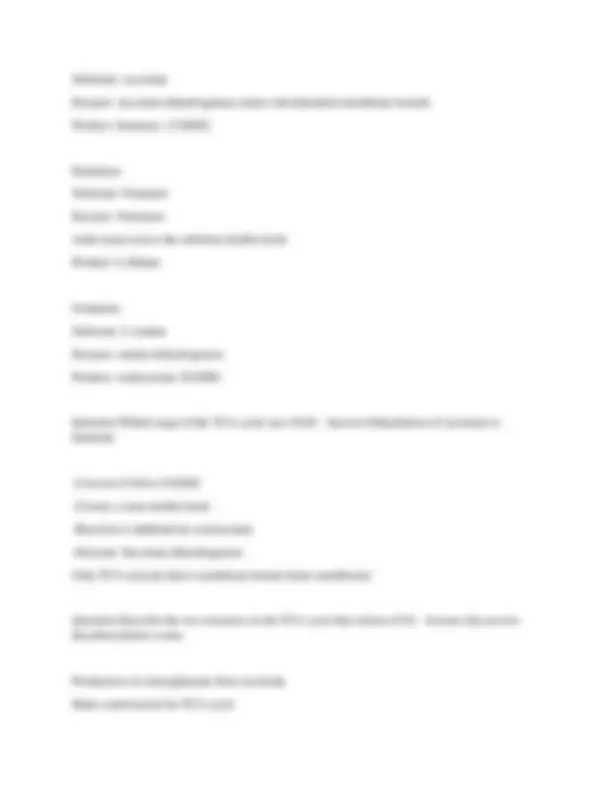
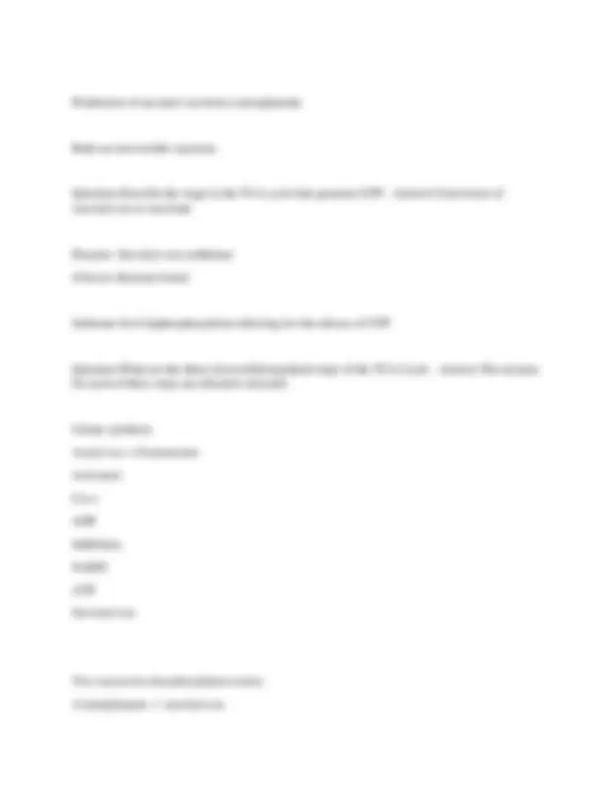
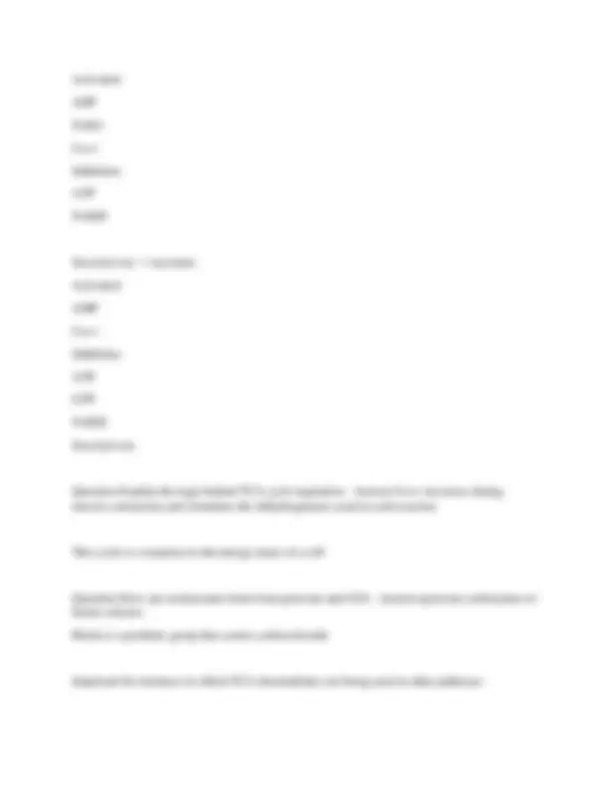
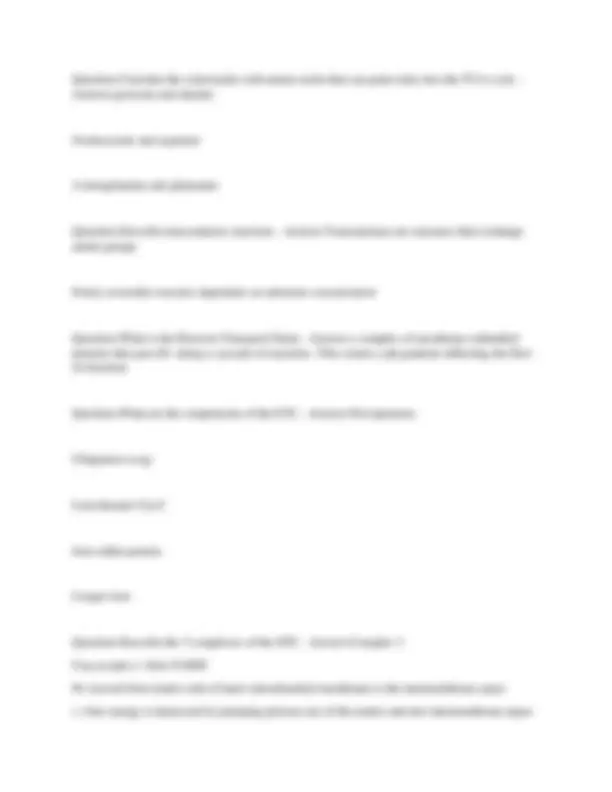
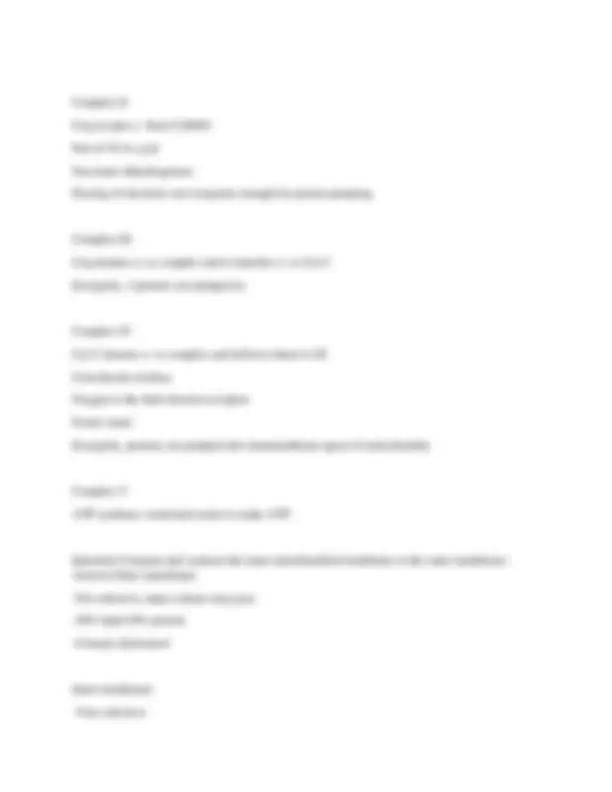
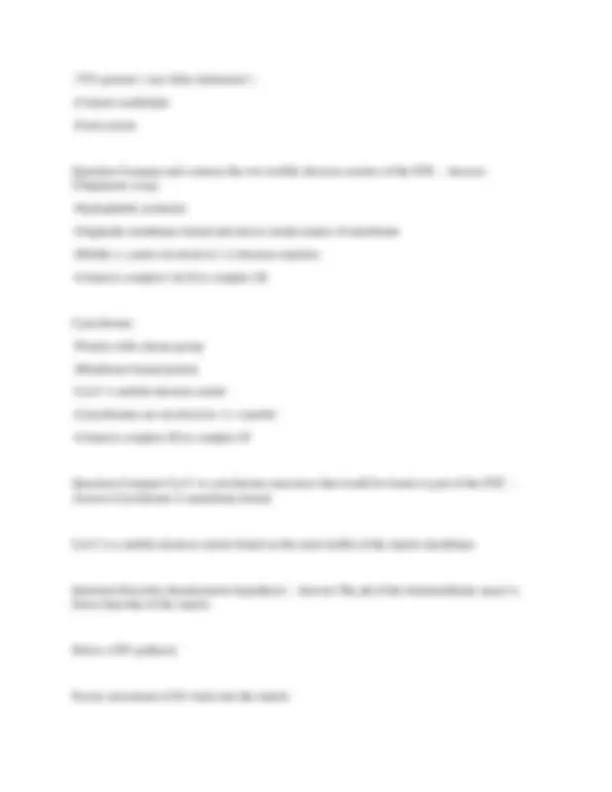
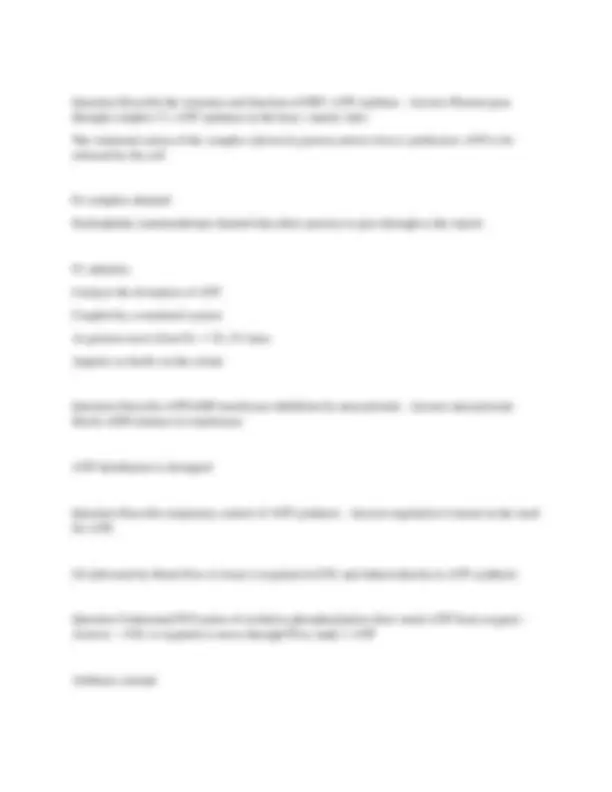
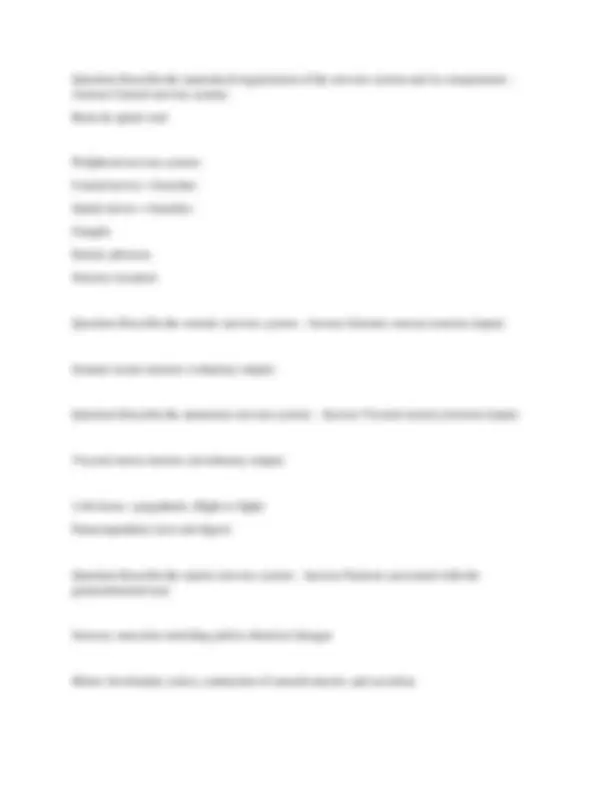
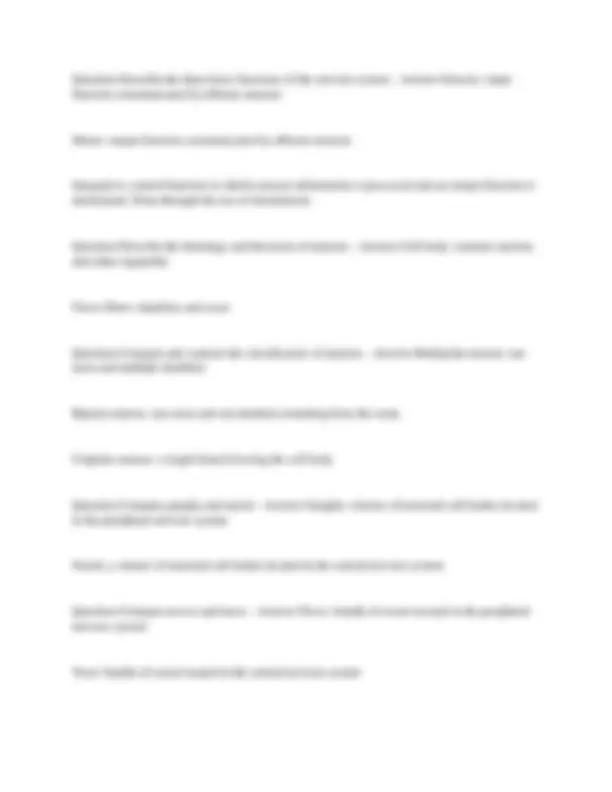
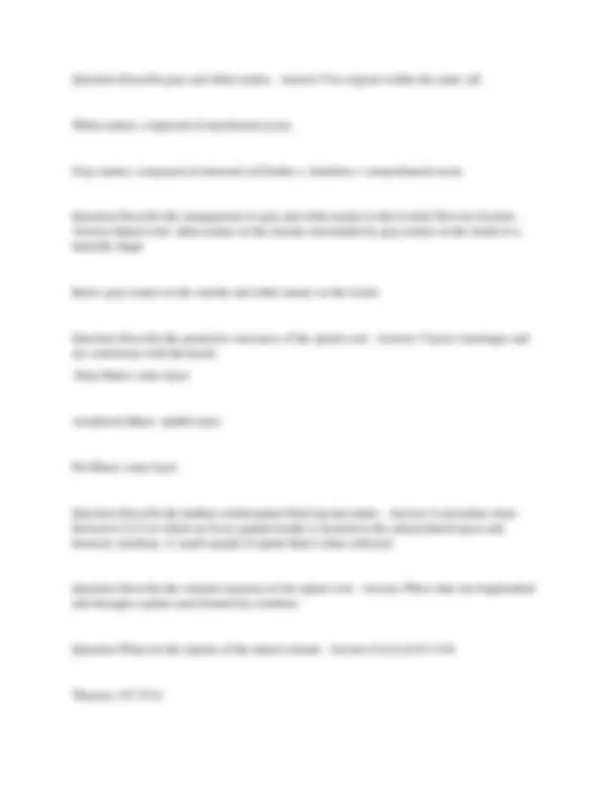
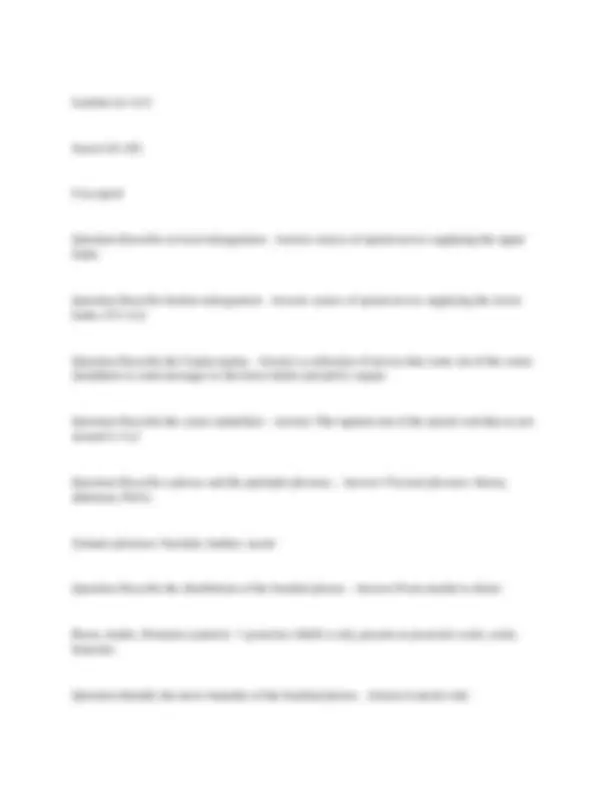
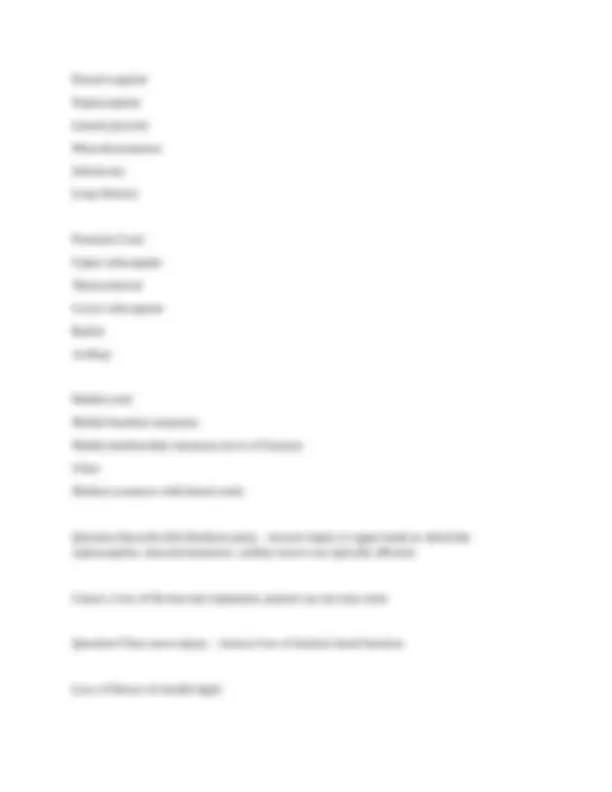
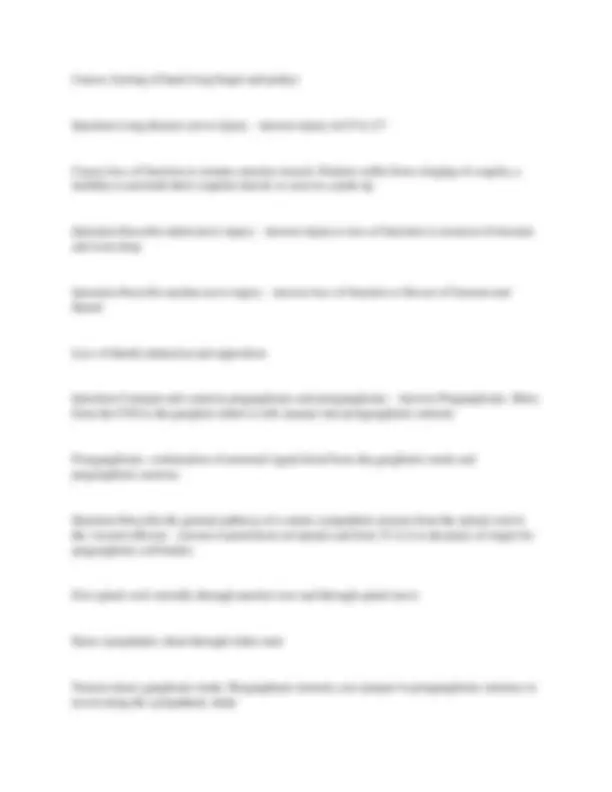
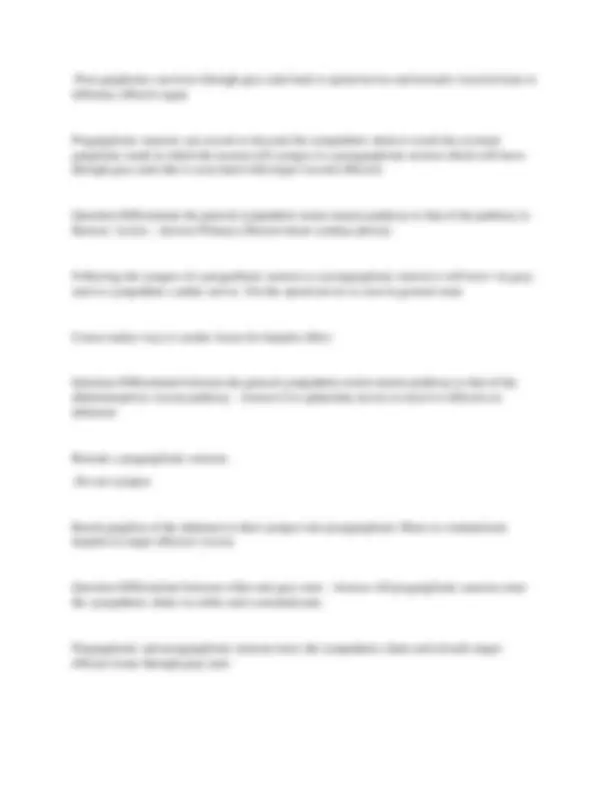
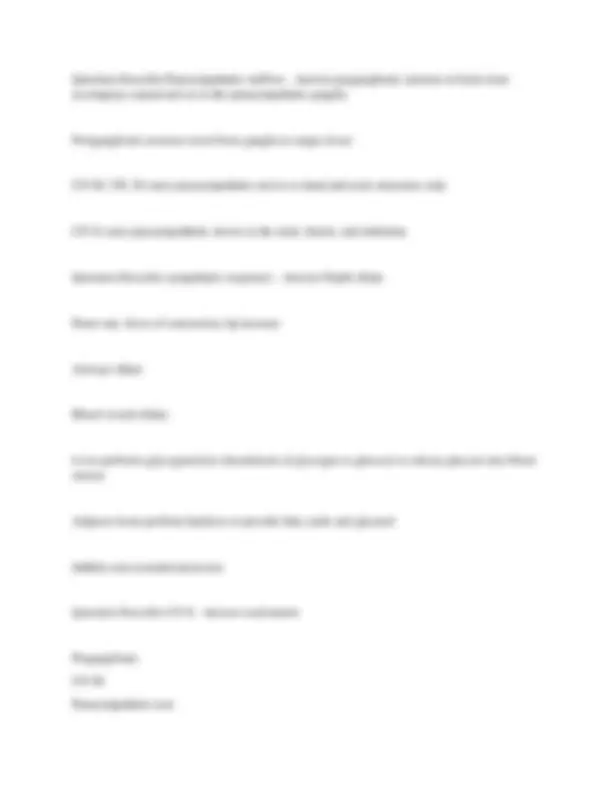
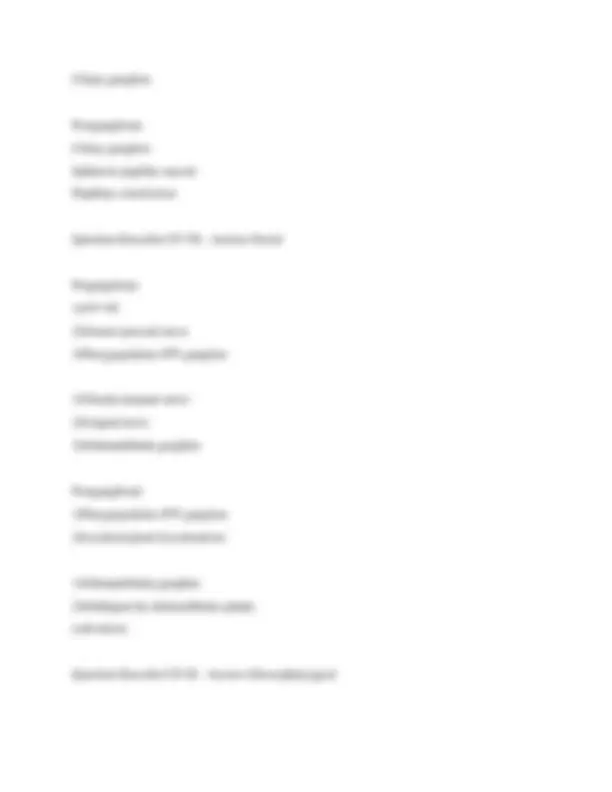
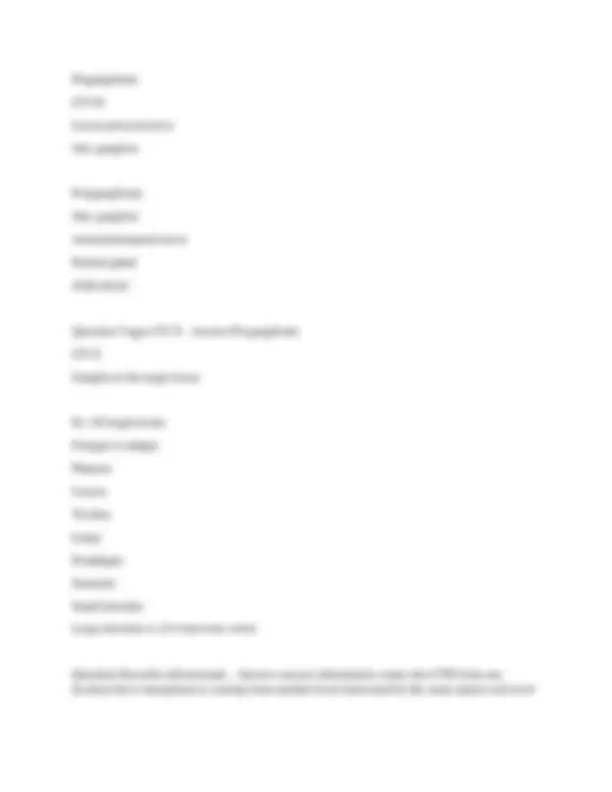
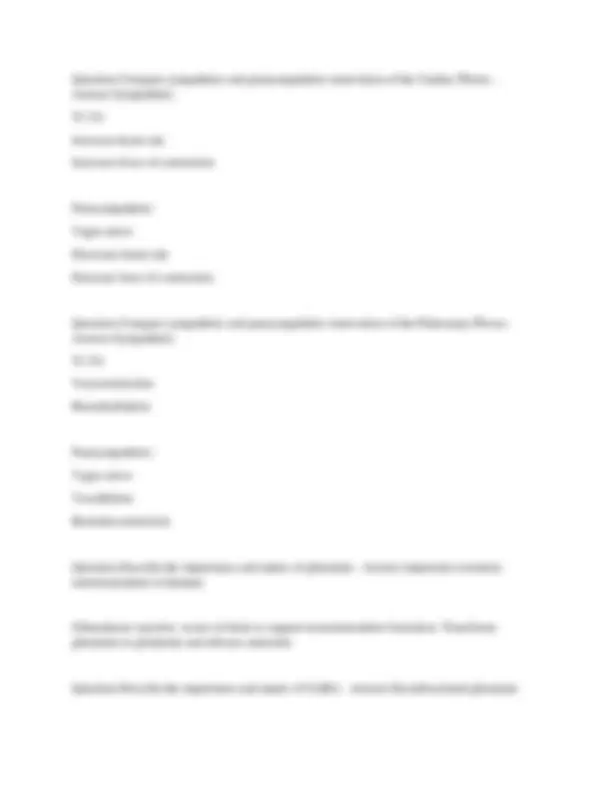
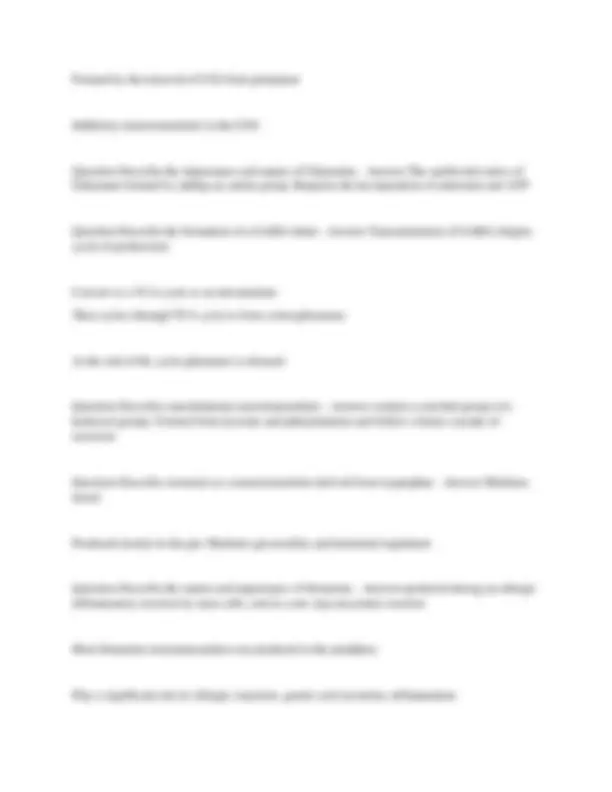
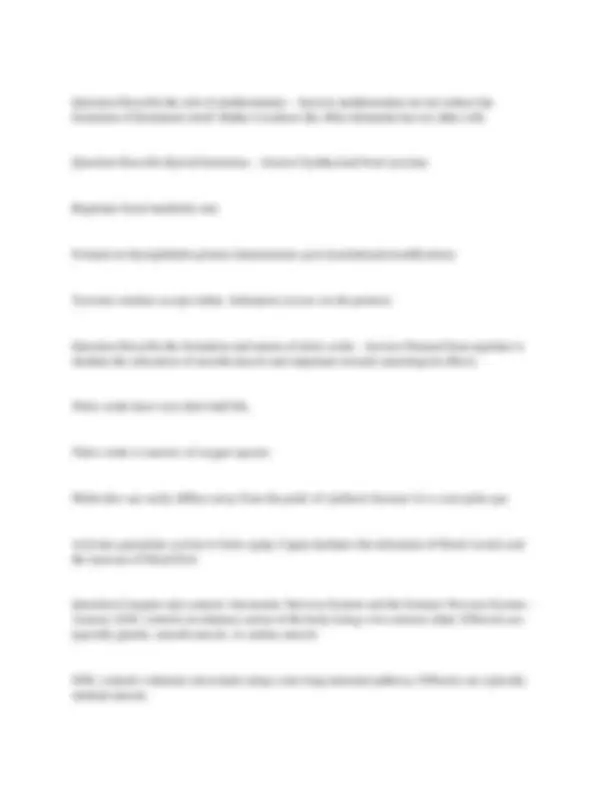
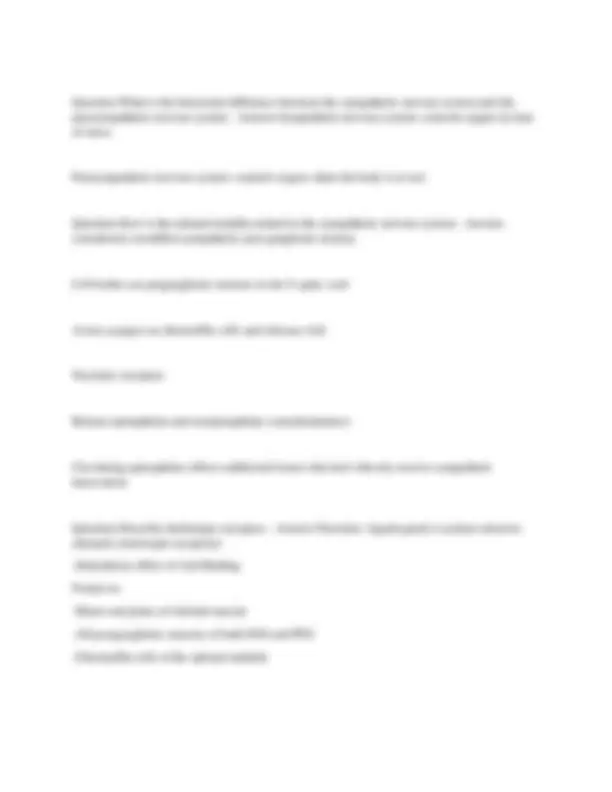
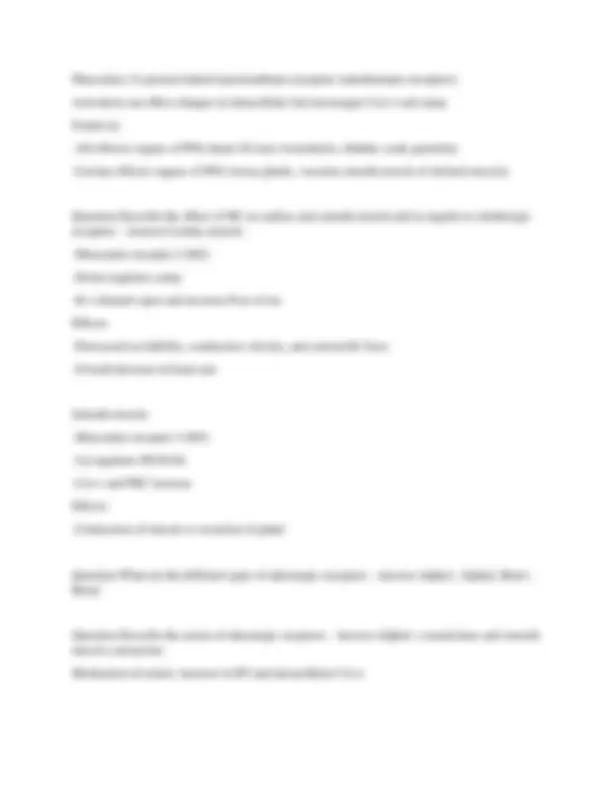
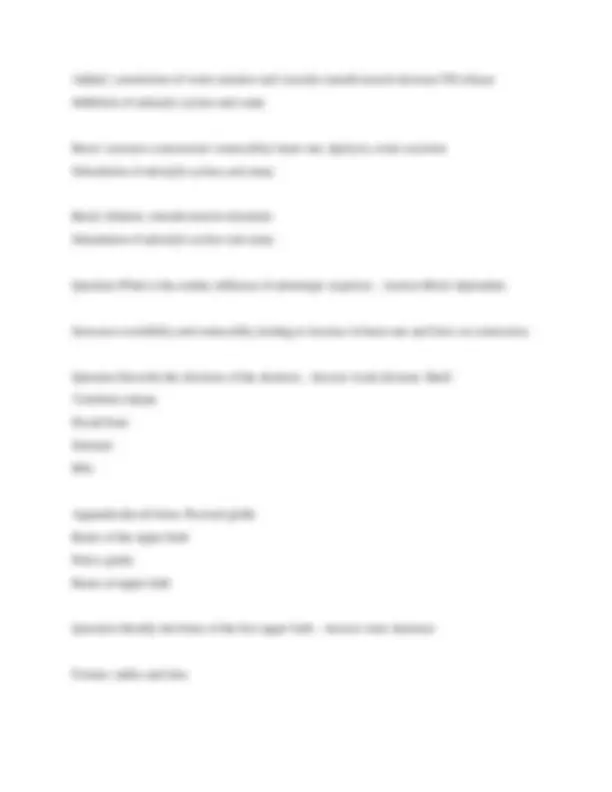
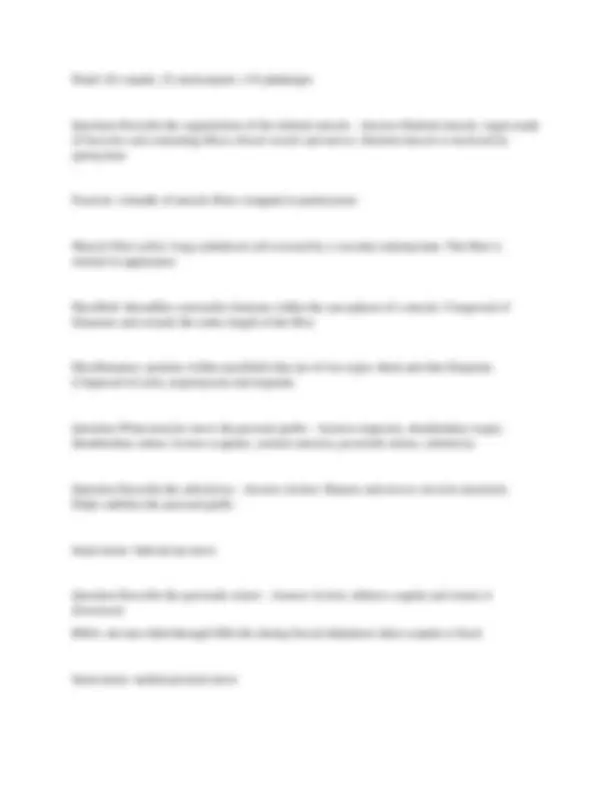
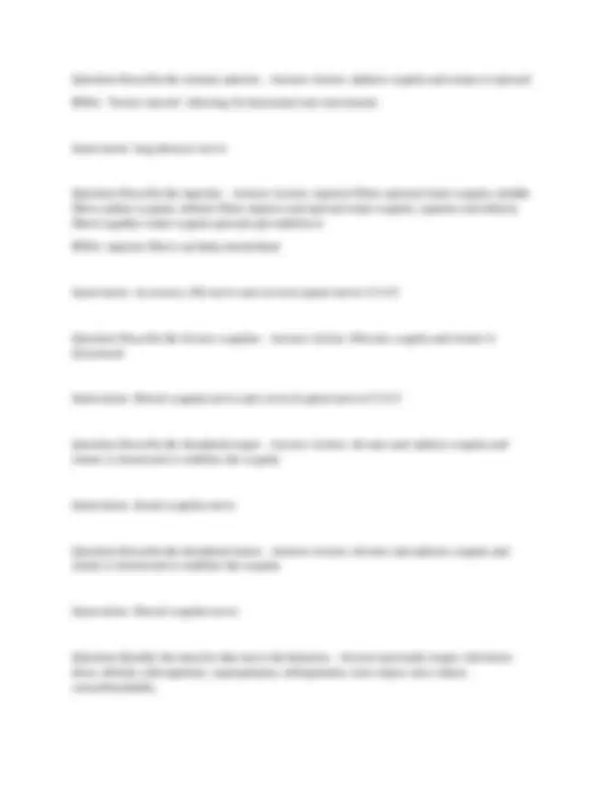
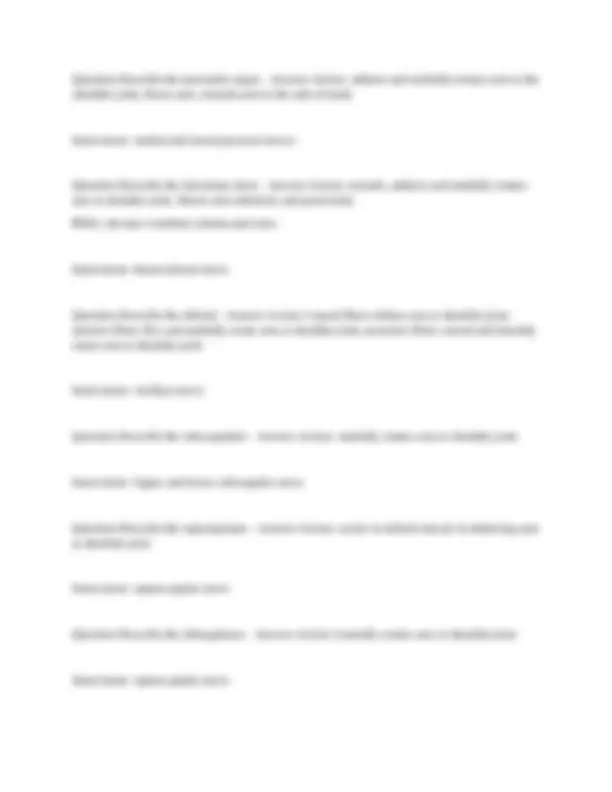
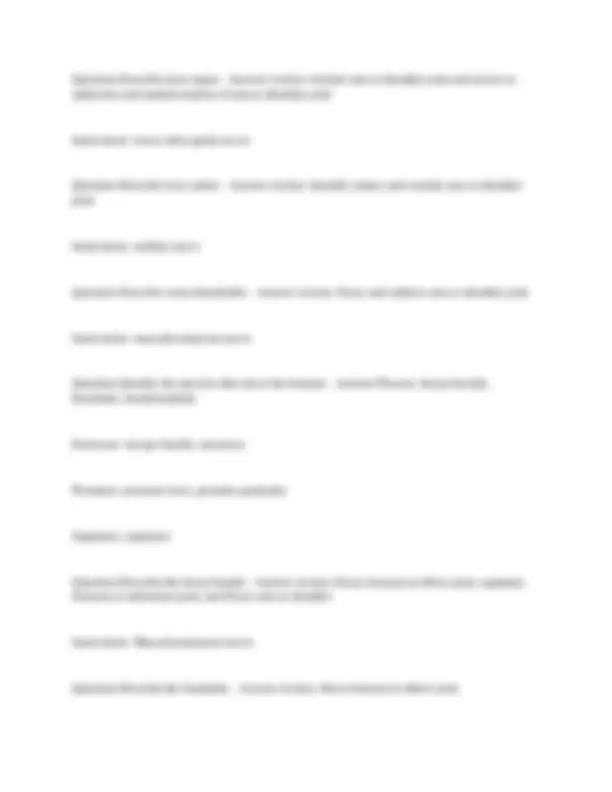
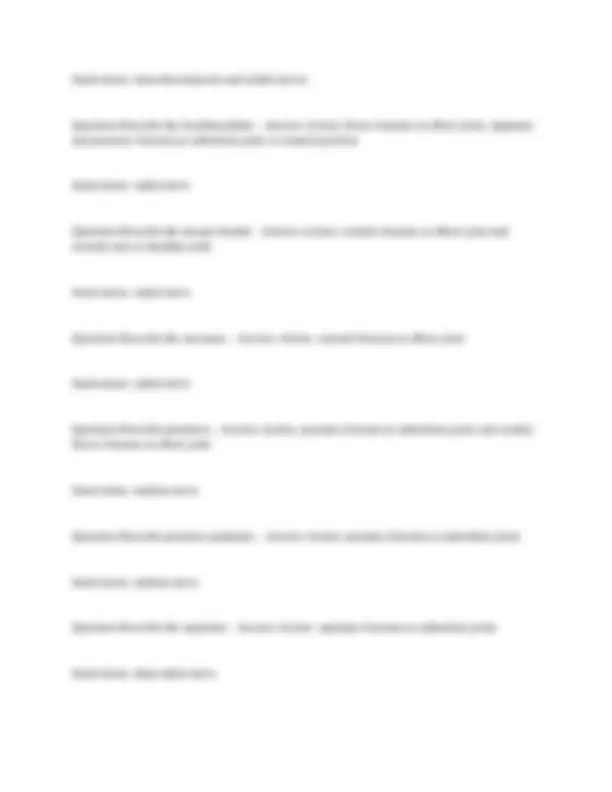
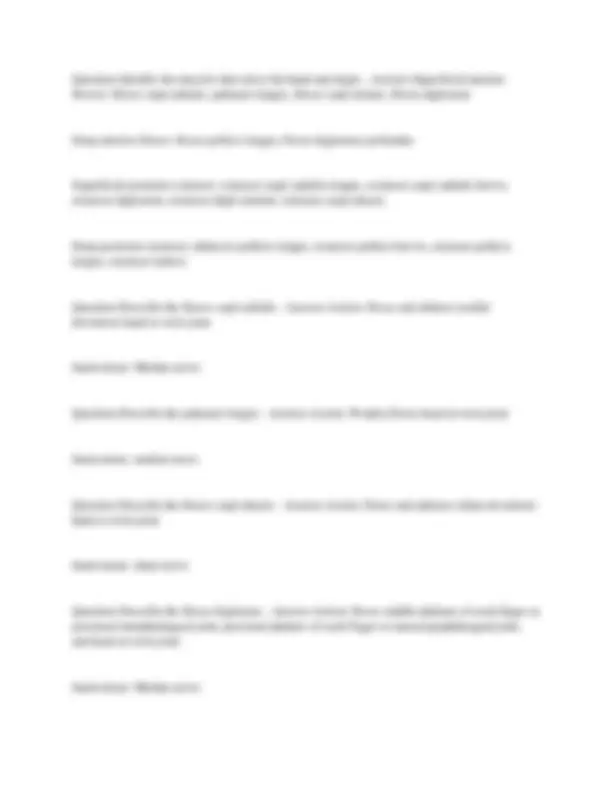
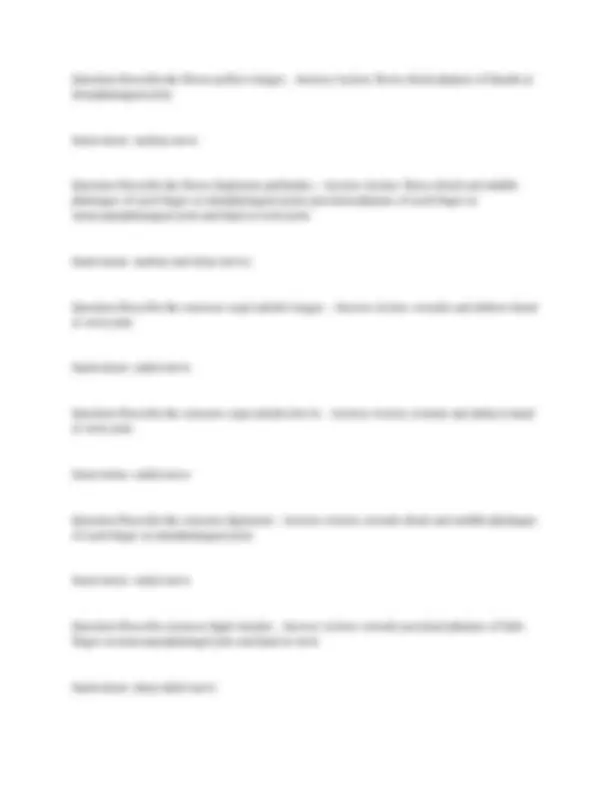
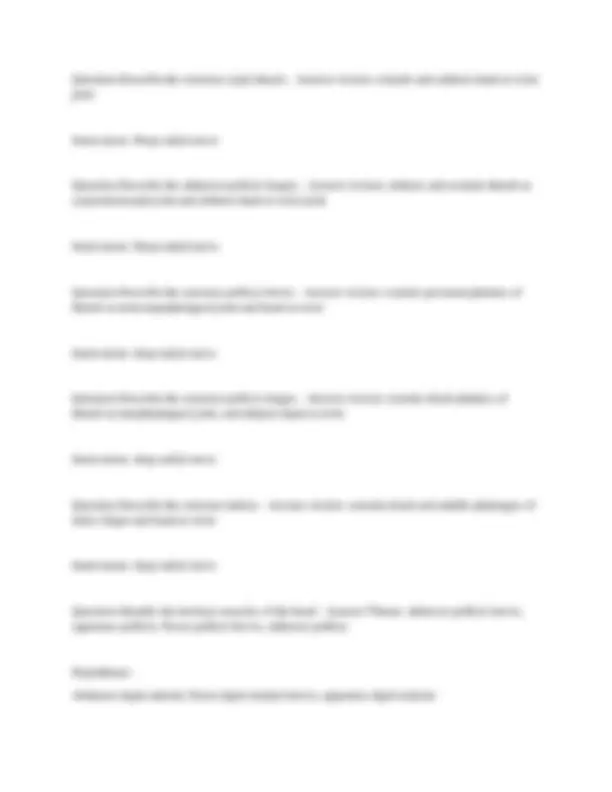
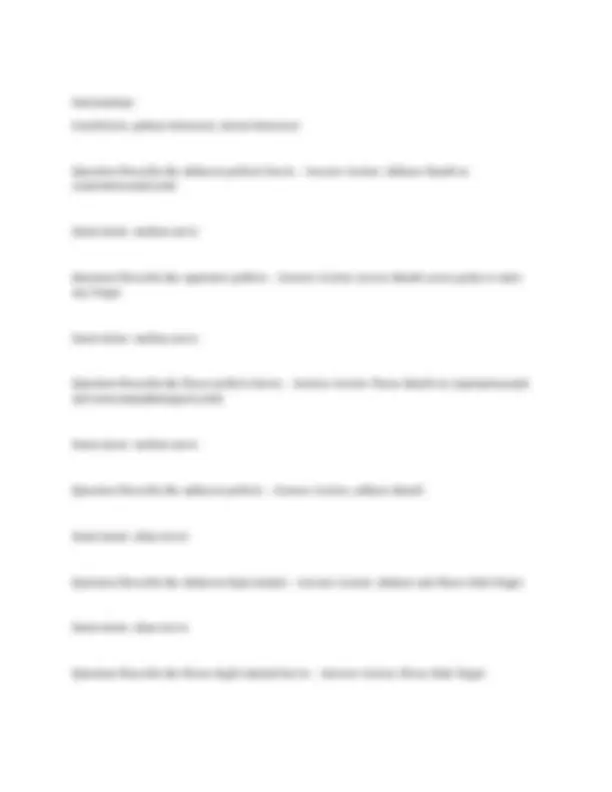
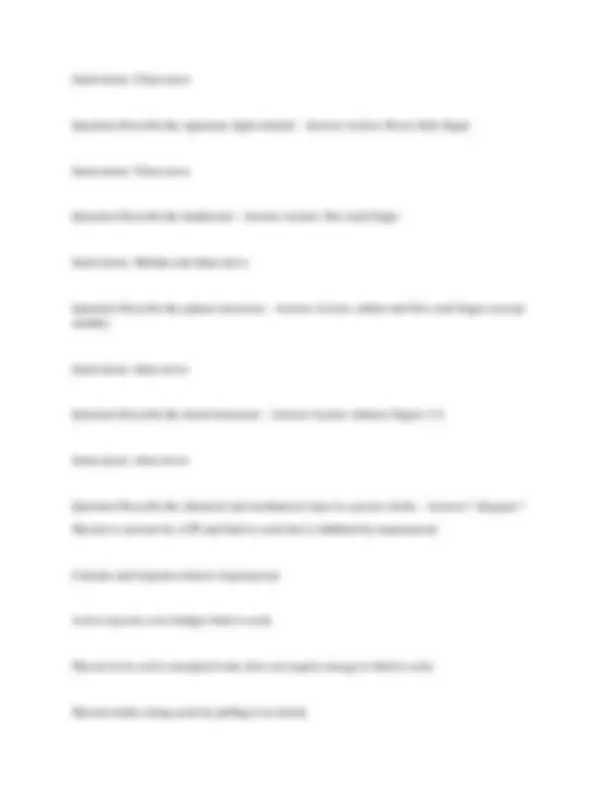
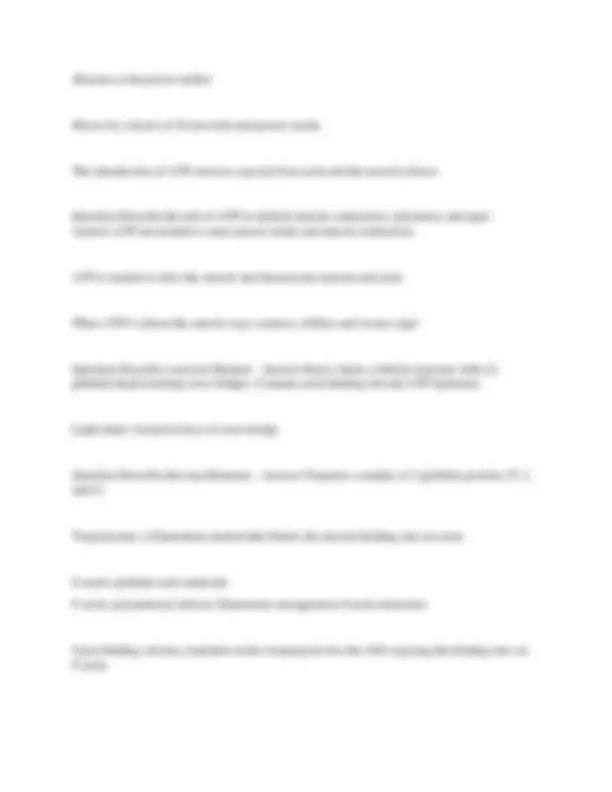
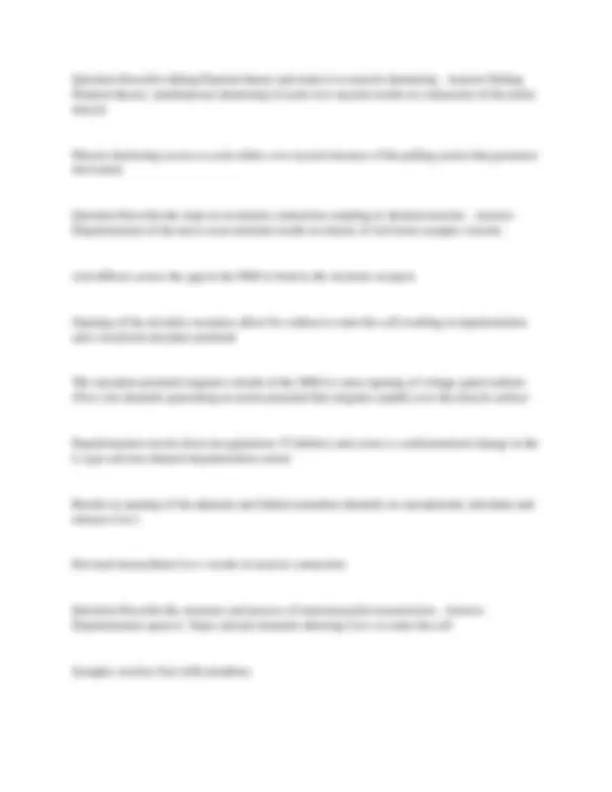
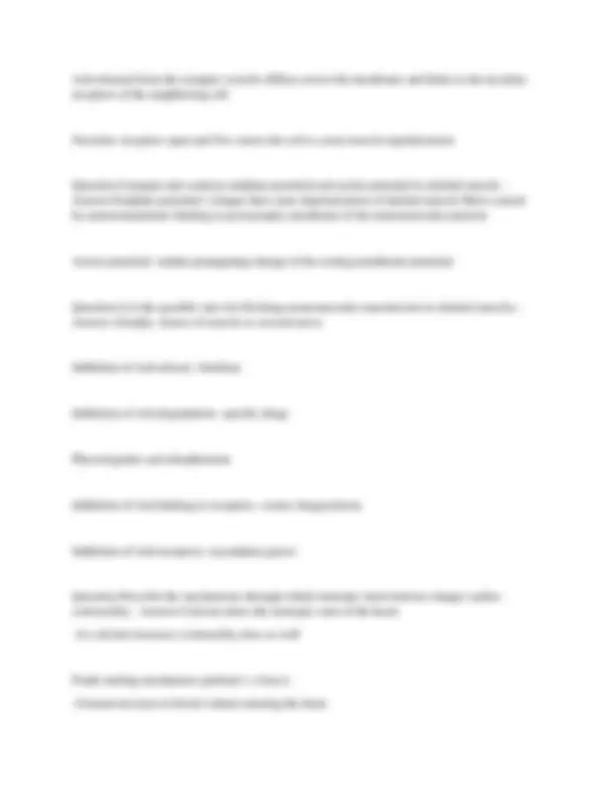
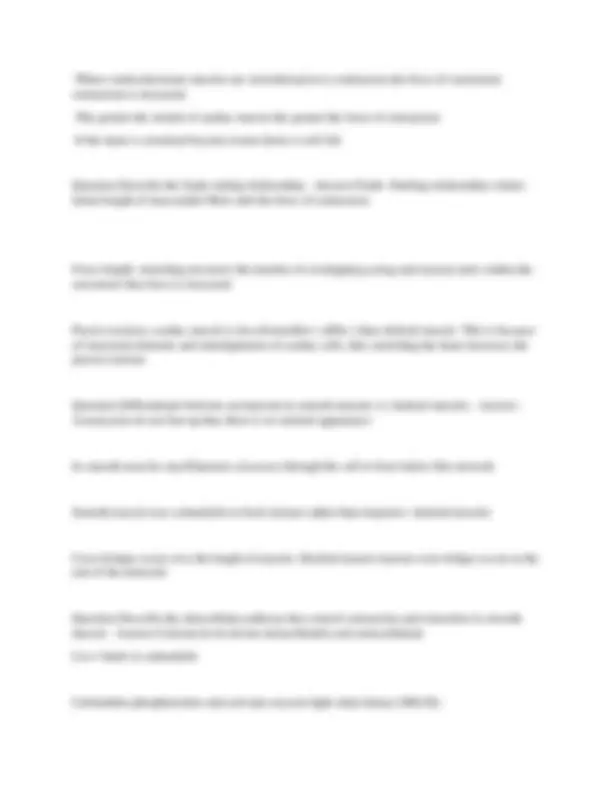
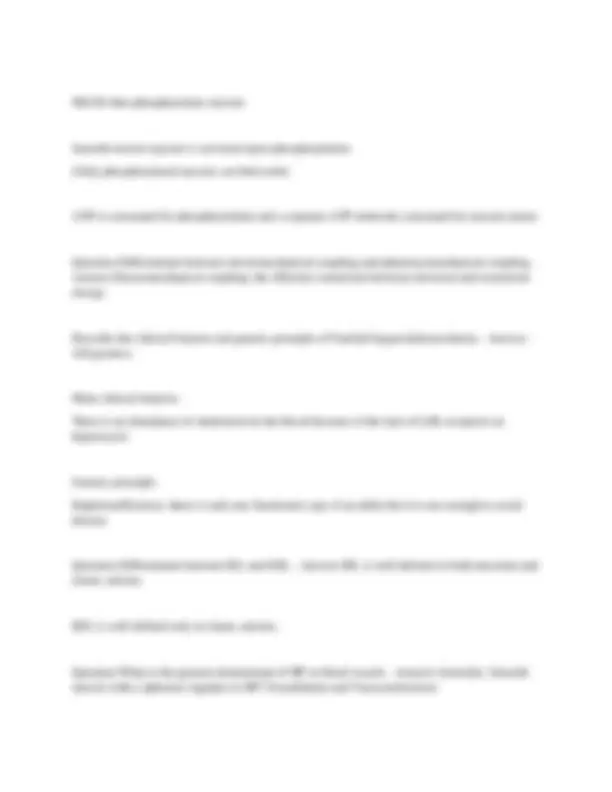
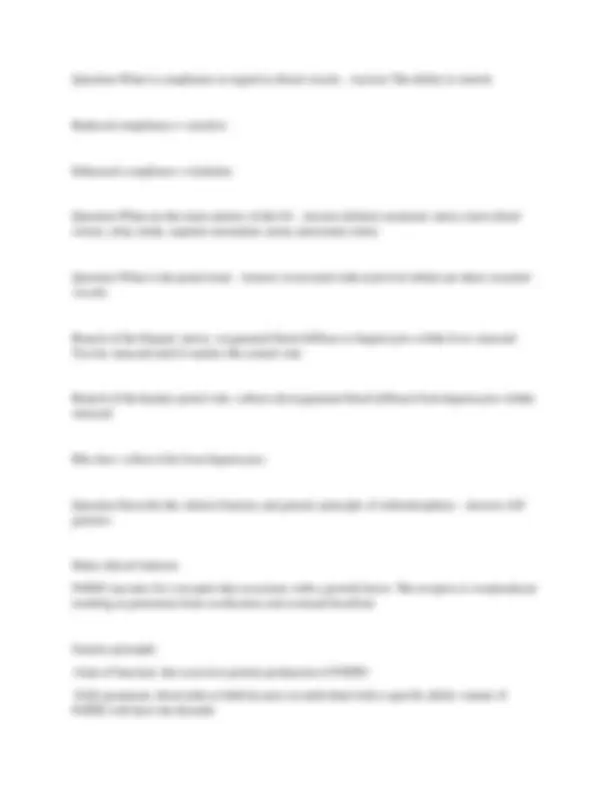
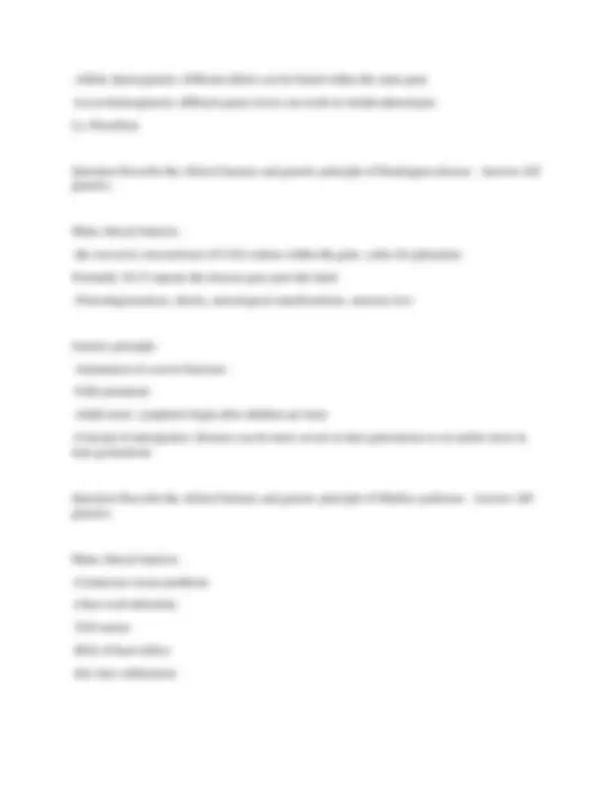
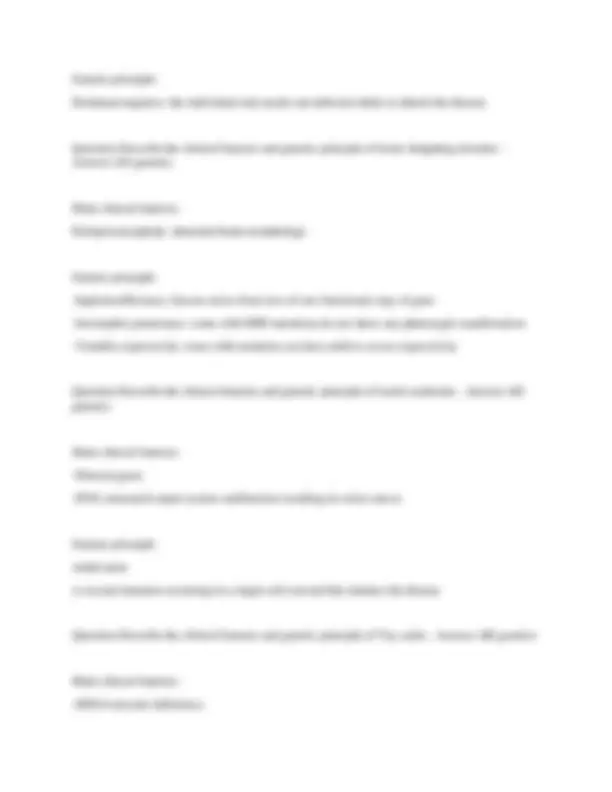
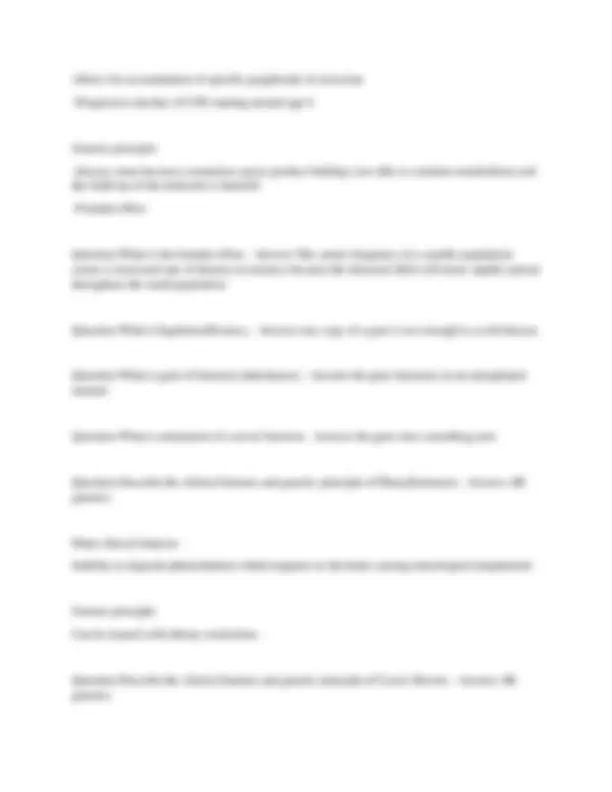
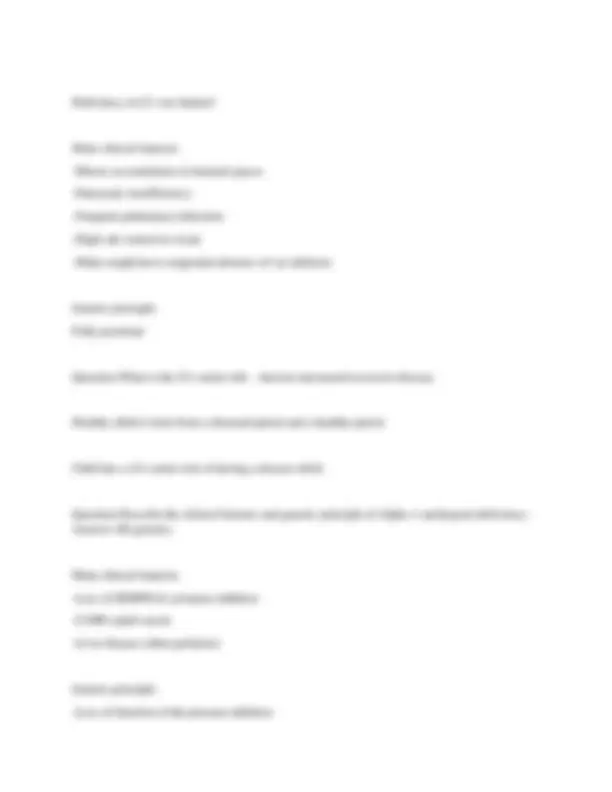
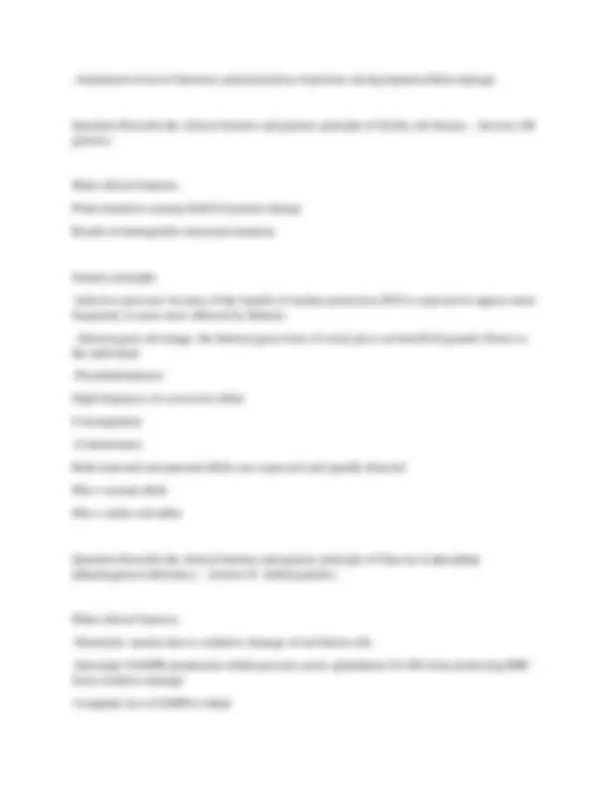

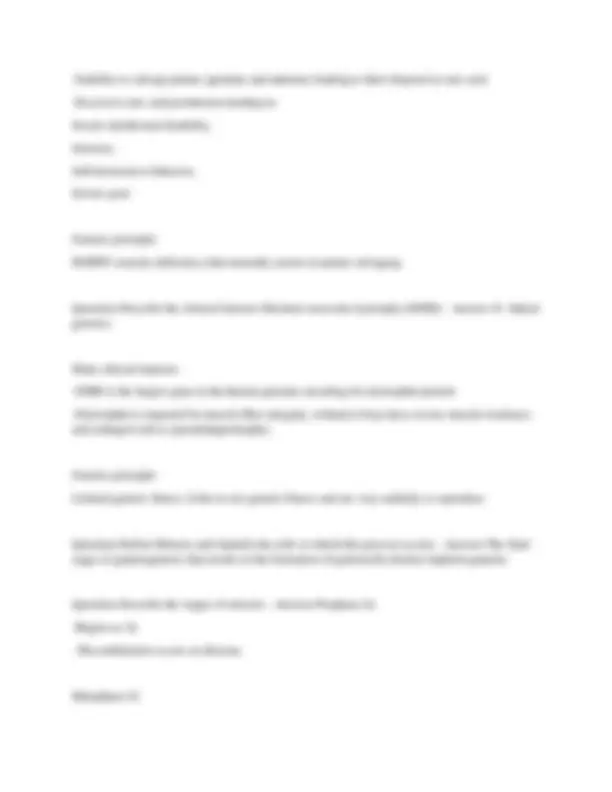
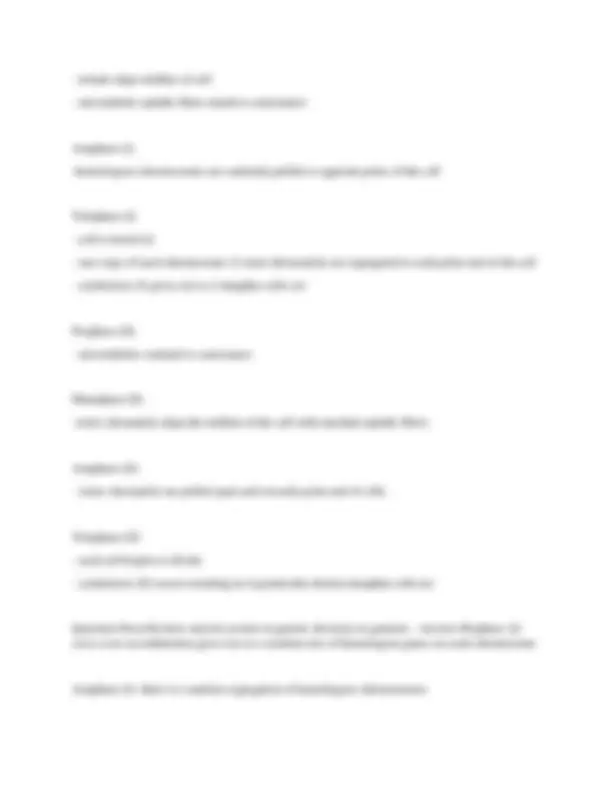
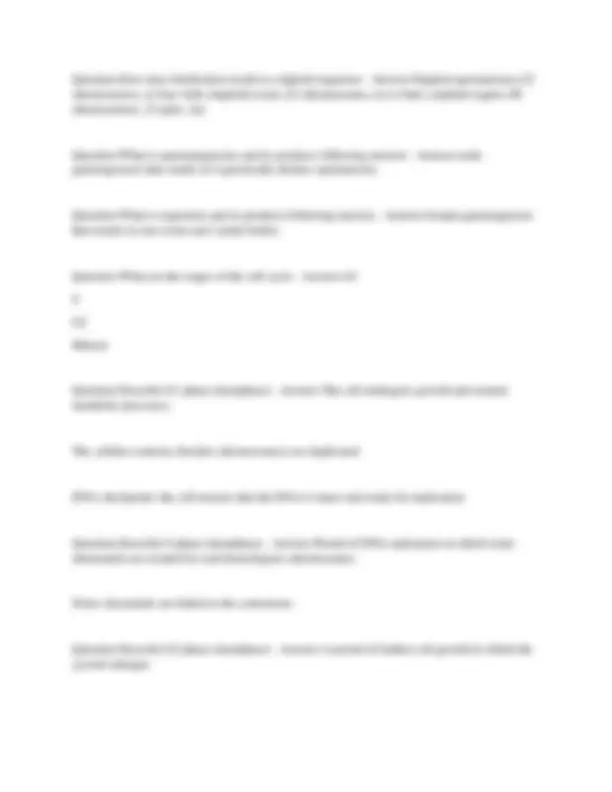
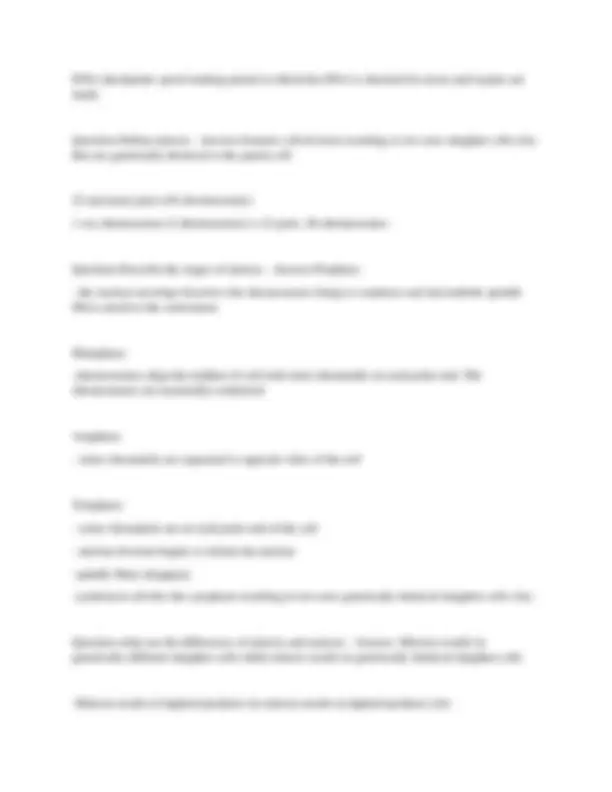
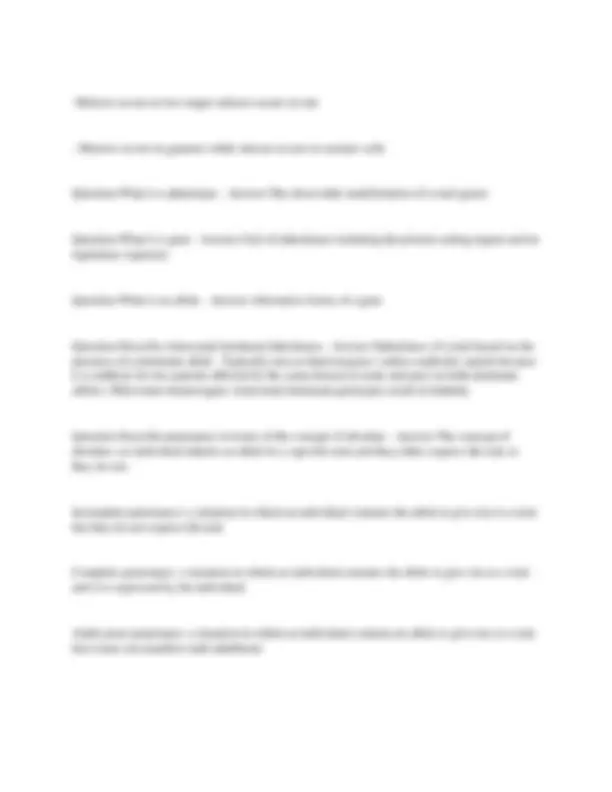
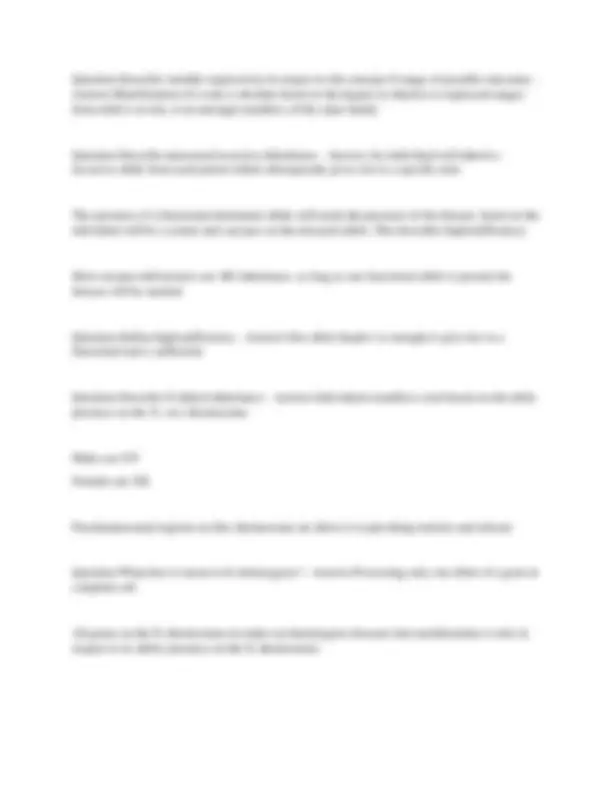
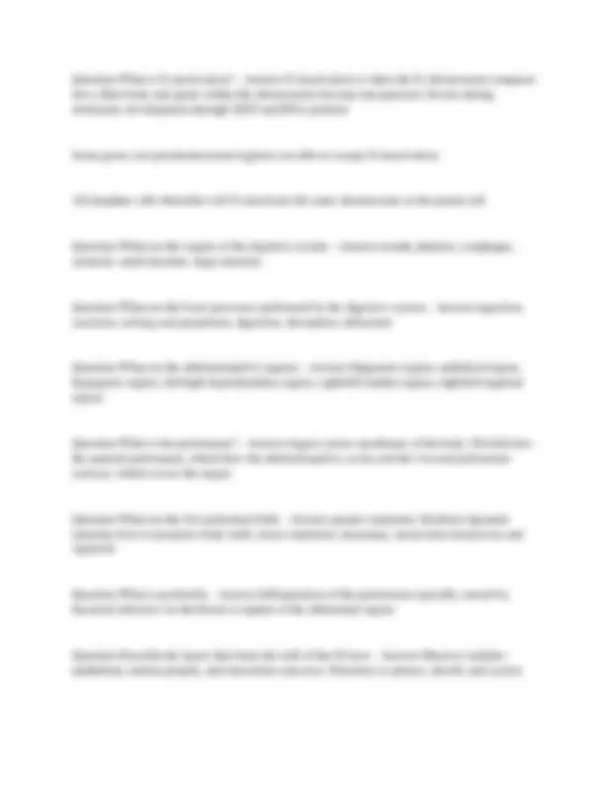
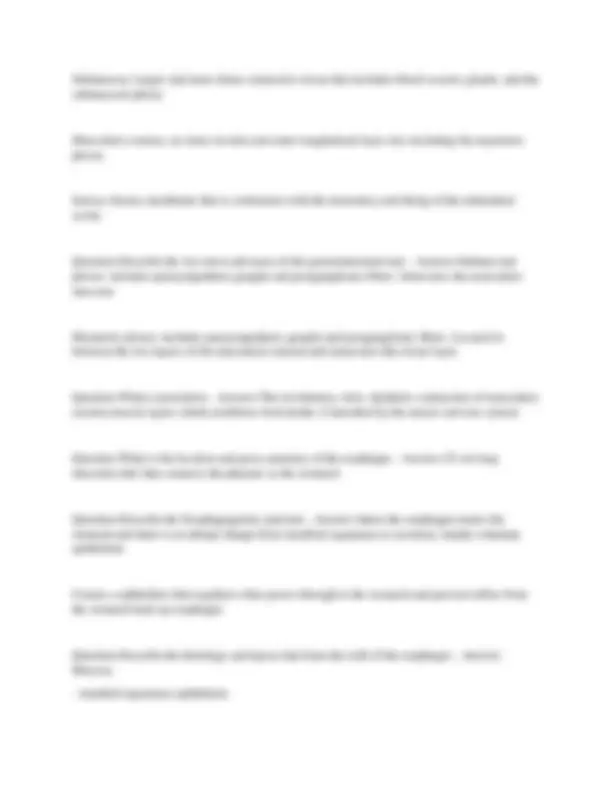
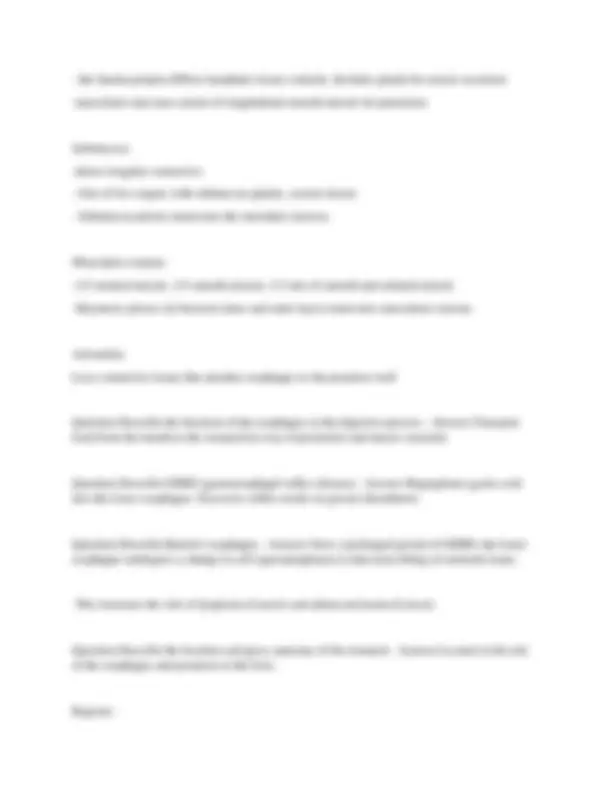
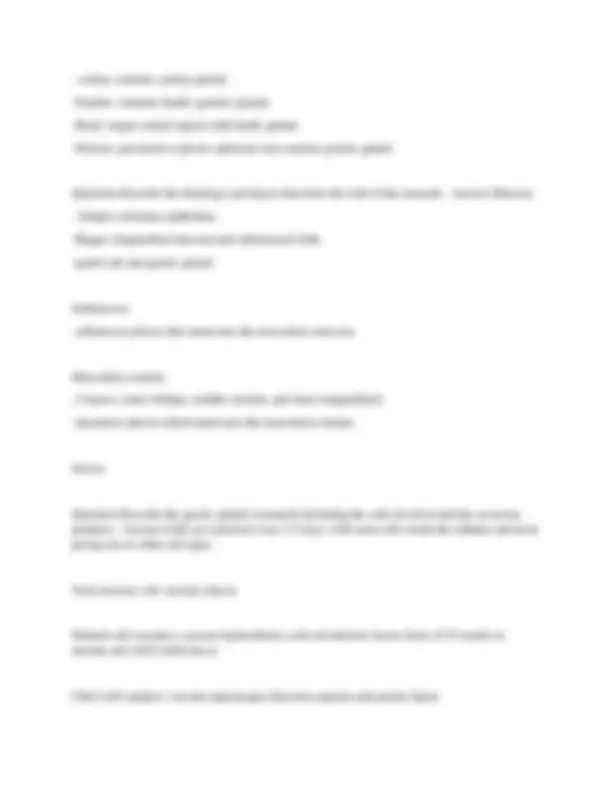
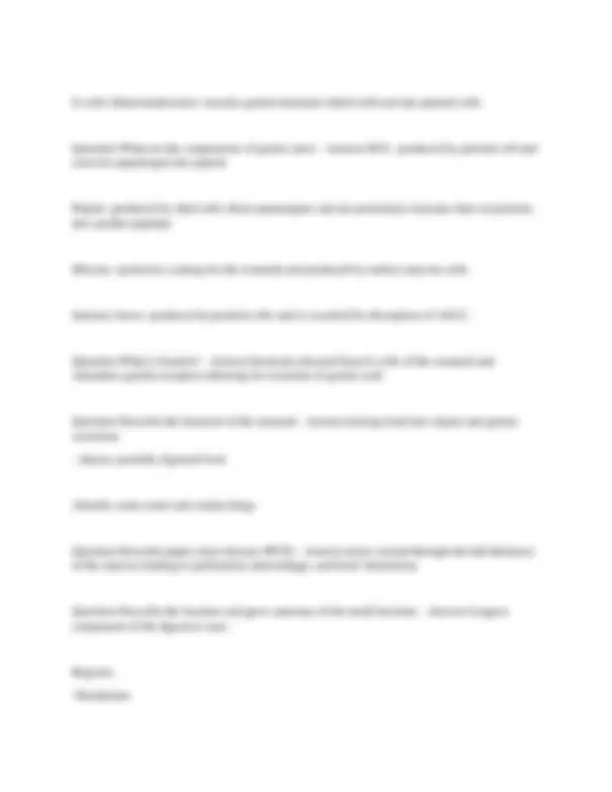
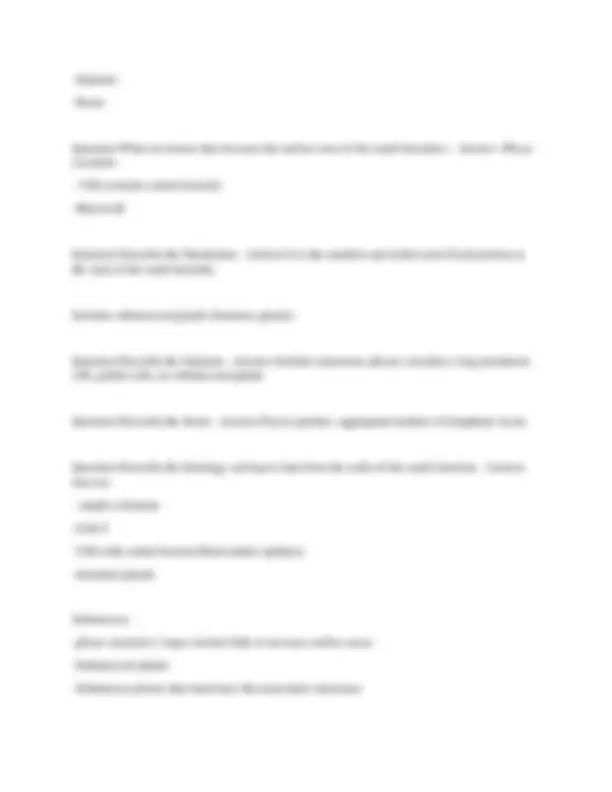
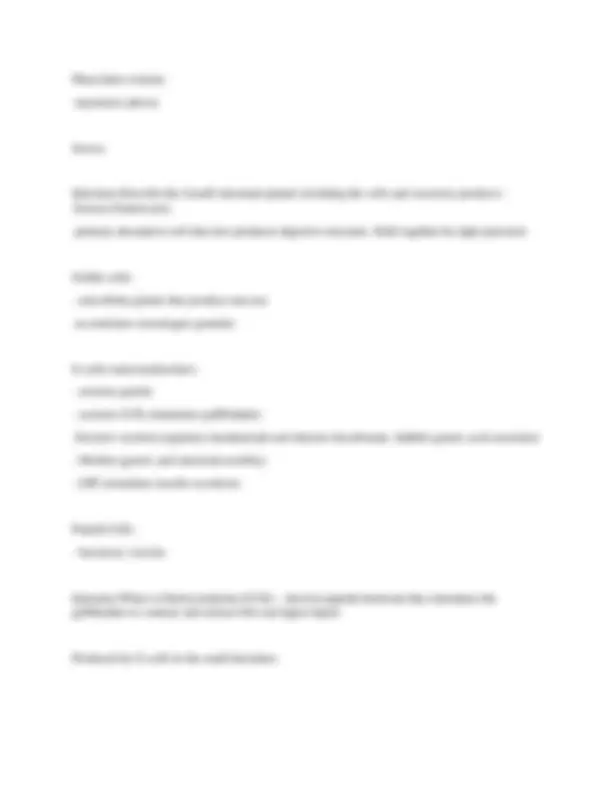
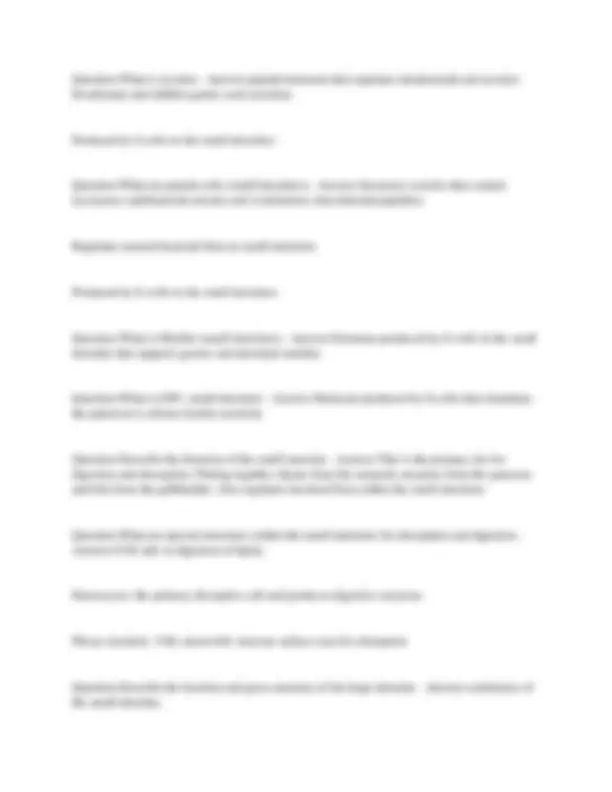
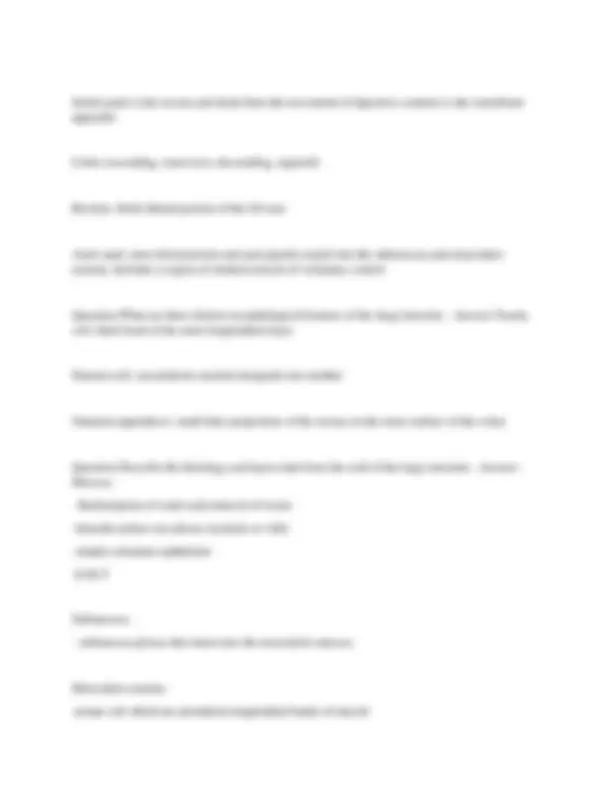
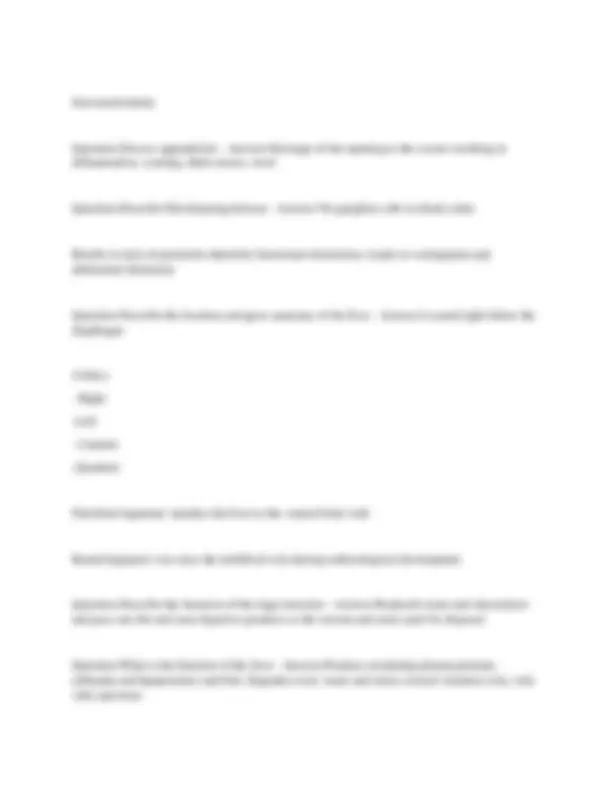
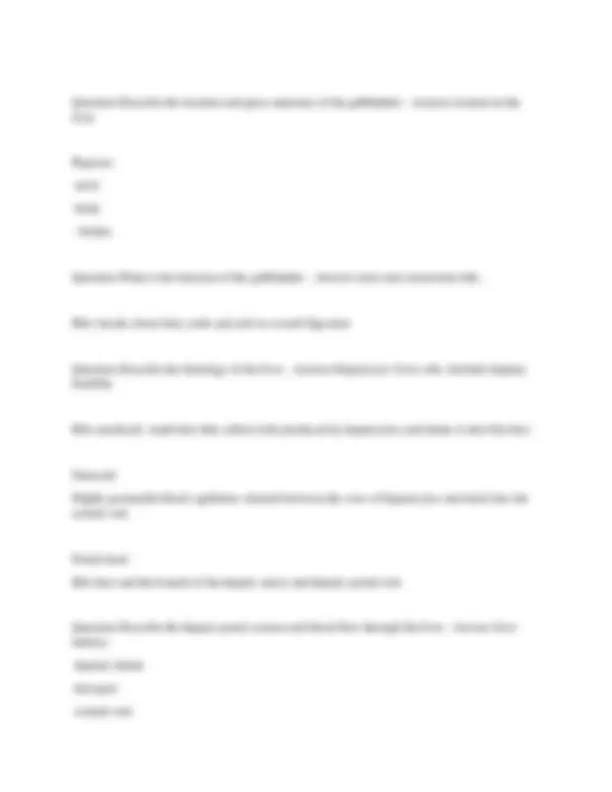
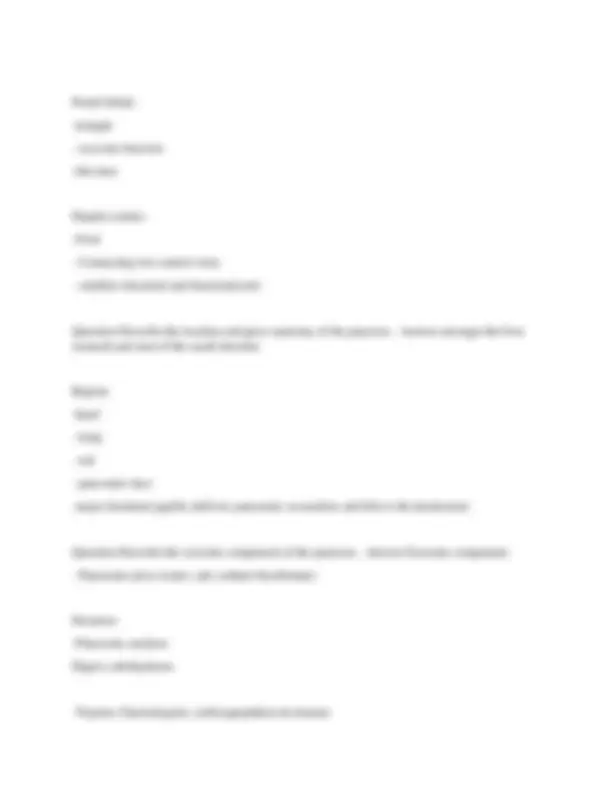
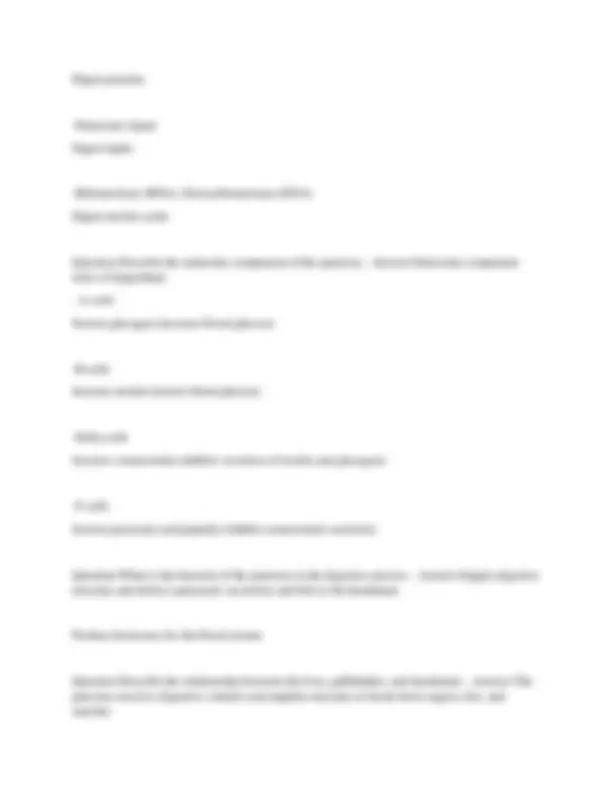
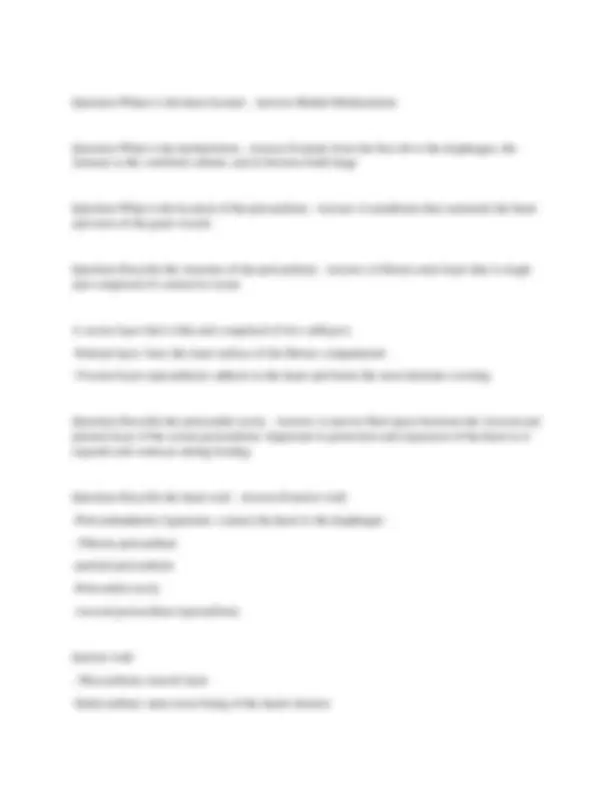
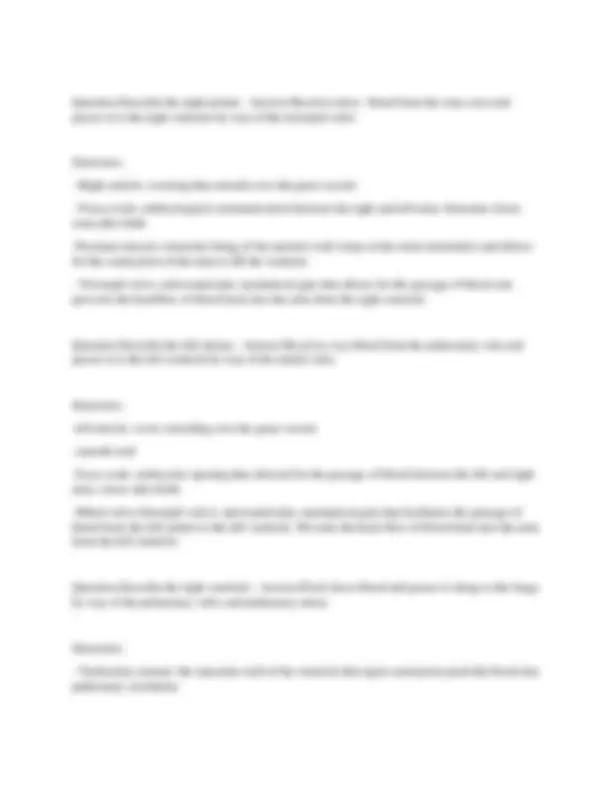


Study with the several resources on Docsity

Earn points by helping other students or get them with a premium plan


Prepare for your exams
Study with the several resources on Docsity

Earn points to download
Earn points by helping other students or get them with a premium plan
Community
Ask the community for help and clear up your study doubts
Discover the best universities in your country according to Docsity users
Free resources
Download our free guides on studying techniques, anxiety management strategies, and thesis advice from Docsity tutors
MSAP LATEST EXAM CONTAINING BIOCHEMISTRY, ANATOMY AND PHYSIOLOGY QUESTIONS WITH CORRECT AND DETAILED ANSWERS.pdf
Typology: Exams
1 / 140

This page cannot be seen from the preview
Don't miss anything!





























































































Question-single stranded binding protein (ssb) - answer-binds single stranded DNA to prevent re-annealing. Question-Primase - answer-primes the DNA for the new strand using RNA Question-What is the primasome? - answer-dnab and primase Question-DNA poly III - answer-Polymerase for elongation in a 5'-3' manner. Also has exonuclease in a 3'-5' Question-DNA poly 1 - answer-exonuclease for the Okasaki fragments, polymerase for the fragments. Question- Oric - answer-site of replication on the prok DNA Question-What 2 important sequences are located on the oric? - answer- 13 - mer in tandem array and 9-mer (there are 4) Question-What does the dna bind? - answer-The 9-mer sequence of DNA on prok. Question-What is the significance of the DNA sequences at the oric? - answer-They are A-T rich at the 13-mer sequences. The dnaa binds to the 9-mer sequences
Question-What is dnac? - answer-Helicase inhibitor - delivers dnab to the template (prok replication) Question-What is dnab? - answer-Helicase (prok replication) and binds primase to form primosome. Question-What is dna? - answer-initiator proteins, breaks hydrogen bonds (prok) Question-Ligase - answer-fixes the nicks Question-Topoisomerase - answer-corrects the "overwinding" in DNA replication in circular DNA. By nicking the DNA Question-What is sigma factor? - answer-in prok, it is part of the holoenzyme (included with primary poly).
Question-How is the amino acid activated? - answer-Through linkage of a AMP to its carboxyl group forming aminoacyl-AMP Question-IF-1 and IF-2 (prok) - answer-come in with GTP and 30S ribosomal unit. Leave when large subunit comes in with the help of GTP - change to GDP. Question-IF-3 (prok) - answer-comes in with GTP and IF1 and IF2 plus the 30S subunit. Leaves when the f-Met trna comes into the mrna codon Question-What is the Shine Delgarno? - answer-The specific mrna sequence that the 30S ribosome subunit binds to initiate translation in prok Question-EF-Tu - answer-Elongation factors - group of proteins with the help of GTP help with translocation. Question-erf - answer-releasing factor for euk Question-RF1 - answer-prok releasing factor - UAA and UAG Question-RF2 - answer-prok releasing factor - UAA and UGA Question-RF3 - answer-stimulates termination Question-supersecondary structure - answer-- Beta-alpha-beta loop
Question-multimeric proteins - answer-Different proteins held together by weak bonds. Example of this is quaternary structure. Question-motifs - answer-a distinctive sequence on a protein or DNA, having a three- dimensional structure that allows binding interactions to occur. Question-prosthetic group - answer-Some consider tightly bound organic molecules. AKA - coenzymes. Question-List the 4 types of receptors - answer-- steroid receptor
Question-What are the 2 integral membrane proteins that regulate? - answer-- pumps/carriers/transporters
Question-Cilia - answer-made of microtubules Move fluid and particles Question-Intermediate filaments - answer-structure - formed from non-polar and highly variable subunits Functions
Question-Homeostasis - answer-the maintenance of the steady state of the internal environment Question-Feed forward - answer-anticipation - See food - > salavate - > smoach says hungry Question-What are the key elements in homeostasis for body temp? - answer-hypothalamus = comparator and sensor for osmotice pressure. Thermoreceptors = sensor Autonomic nervous system = effector Question-what is the osmolarity of a cell in a steady state? - answer-about 290 mosm Question-enac - answer-passive transport for Na to enter the cell for absorption Question-Km measures - answer-that affinity of a substrate for the enzyme Question-Vmax - answer-measures the max that an enzyme can produced when saturated. Question-competitive allosteric does what to MM info? - answer-Km is increased, Vmax stays the same Question-What is an example of a competitive allosteric inhibitor? - answer-statins Question-noncompetitive allosteric does what to MM info? - answer-Vmax is decreased. Km is the same Question-uncompetitive allosteric does what to MM? - answer-both Vmax and Km change (decrease) Question-Peroxisome structure and function - answer-Vesicle
Question-Coenzyme - answer-Non-protein, vitamin Accountability - Answer-A person or organization is said to be _____ when discrete, observable standards are set and subsequent performance is measured against eh performance standards. Question-Action - Answer-Refers to an event "x", that is comprised of a behavior (or set of behaviors) in addition to some information processing and often, some intention or purpose. Question-Altruism - Answer-Means focusing on the needs of others without calculating self- benefit. Question-Attitude - Answer-An emotional commitment following an act of judgment or evaluation. Question-Authority - Answer-Because of institutional position, experience, or expertise one person is charged with directing or limiting the actions of others. Question-Autonomy - Answer-The ability to act on the basis of good reason. It is not simply a matter of acting on the basis of unreflective wants. Question-Bullying - Answer-When a person(s) possessing power disproportionate to that of others, uses that power to intimidate and manipulate. Question-Change - Answer-Any variation in pattern. Question-Character - Answer-Is an aspect of personal identity that merits praise or rebuke. Question-Character trait - Answer-Is an element of character. Normally, character traits are thought of as virtues and vices.
Question-Duty - Answer-The consequence of the creation and assignment of rights. Int he domain of morality, a duty exists when a moral agent recognizes a compelling obligation to act or forgo acting, in behalf of another. Question-Education - Answer-Greek word, educare, meaning "to lead out." It is most effectively thought of as "participate in the Great Conversation of Humankind." Question-Emotion - Answer-Is a "mindful" feeling consequent in part, upon some evaluation with regards to an event, object or person. Question-Episode - Answer-Any event that can be singularly distinguished from surrounding events. Question-Equality - Answer-Treating every one the same. Question-Excuses - Answer-Attempt to identify extenuating circumstances beyond one's control Question-Expertise - Answer-The ability to ask more penetrating questions than the uniformed. Question-Fair - Answer-To assign to no one a disadvantage prior to an activity's commencing. Question-Favoritism - Answer-Preferring one person, subject, talent, behavior, or event to the detriment of others. Question-Focus - Answer-Directed attention to some matter free from distracting influences. Question-Freedom - Answer-Absence of restraint Question-Game - Answer-A decision-making situation for multiple agents in which an agent's outcome depends not only on his act, but also on the other agent's acts.
Question-Grading - Answer-Discriminating among levels of achievement Question-Harassment - Answer-With deliberate and malicious intent, a person(s) attempts to limit another's exercise of autonomy. Question-Indoctrination - Answer-Causing someone to accept a belief, practice or attitude for which he or she is unable to provide justification. Question-Information - Answer-Is a set of rule-governed symbols. By itself ______ has no meaning. Question-Integrity - Answer-Meaning wholeness. A person exhibits ______ by 1) discerning what is right and what is wrong; 2) acting on what the actor discerns even at personal cost and 3) saying openly that you are acting on your understanding of right and wrong. Question-Intersubjective agreement - Answer-Show that the perceptions of one person do not map on to the perceptions of another in any wholly precise and exacting fashion. Such __________ provides a basis for all sorts of social commerce including such things as the moral and the pedagogical. Question-Is - ought gap - Answer-There is a logical gap between factual statements about how the world is and prescriptive recommendations about how it ought to be. The philosopher David Hume was the first to notice the logical consequences of the "is-ought" nearly three hundred years ago. Question-Justice - Answer-Traditionally associated with the Latin phrase "suum cuique tri'buere" meaning to allocate to each his or her own. Question-Knowledge - Answer-Information that maps onto reality in a reliable and uncontroversial fashion is ______. The "mapping-on" effect of knowledge reflecting meaning. This includes differences between "knowing how" and "knowing that"
Question-Ought implies can - Answer-To say that someone ought to do some act "x", is to presume that the person is in fact empowered to do "x." Ought implies can. Question-Pathologic guilt - Answer-An unnatural emotional response to wrongdoing or alleged wrongdoing. If a person feels guilt when no wrong is done, the feeling is ________. Question-Penalties - Answer-Are negative consequences assigned to an action. They are merely a matter of negative reinforcement aimed at extinguishing behavior. Question-Personality - Answer-Is a facet of personal identity. Question-Personality traits - Answer-An element of one's personality as opposed to one's character. Personality traits include such things as being extroverted or introverted, happy or sad, morose or optimistic and so on. Question-Plan - Answer-based upon a continuous inventory of resources, a plan prescribes those resources to be used, who will use them and who will benefit by their use. Question-Professional - Answer-Pertains to the shared moral vision of a community of trained specialists. Question-Protocol - Answer-Is a stepwise procedure for insuring the completion of some task. Question-Psychological egoism - Answer-A theoretical descendent of empiricism and later (and more specifically) behaviorism. Encompasses any theory of motivation limiting itself to the self- interest of the acting agent. "Motivation is a matter of the carrot or the stick," "What's in it for me," "Everyone acts out of self-interest" Question-Punishment - Answer-When a person is in proper authority over another, deliberately and intentionally assigns to the other a negative consequence for violating the moral order and, in addition, makes the other mindful of the nature and extent of the violation. There is no "non- moral" punishment.
Question-Racism - Answer-Disfavoring others because of their race. Question-Rationality - Answer-Being responsive to reason. Question-Responsibility - Answer-Is a moral commitment to manage some range of potentialities. Question-Right - Answer-A human artifact. Are prescribed, specific protections for the purpose of managing social relations. Create license for one or more persons simultaneous with the creation of duties on the part of others. Whenever a _______ is create, ad duty is created that thereafter obligates one or more other individuals. Question-Rudeness - Answer-Action that diminishes the show of respect due others. Question-Schooling - Answer-Refers to practices apart from educational practices. Question-Sexism - Answer-Disfavoring others because of their gender. Question-Strong character - Answer-Is said to have the strength of will to pursue his or her favored virtues and avoid offending vices. Is ordinarily thought to have integrity and the ability to hold him or herself personally accountable for not living up to his or her ideals. Question-Teach - Answer-Is a task verb. It identifies the task one undertakes when deliberately trying to bring specific attitudes, skills, beliefs, feelings, behaviors and habits into the life of another. Question-Training - Answer-Teaching skills and facts for the purpose of caring out explicitly defined tasks. Question-Understanding - Answer-Involves a feel for the application of knowledge, flexibility, heuristical tools and speed in the employment of knowledge to address a presenting need. One can say that __________ is meaningful.